13th Meeting of the Conference of the Contracting Parties to the Ramsar Convention on Wetlands (COP13)
Wetlands for a Sustainable Urban Future
22-29 October 2018 | Dubai, United Arab Emirates (UAE)
Ramsar COP13 Summary Highlights
Highlights for Monday, 29 October 2018
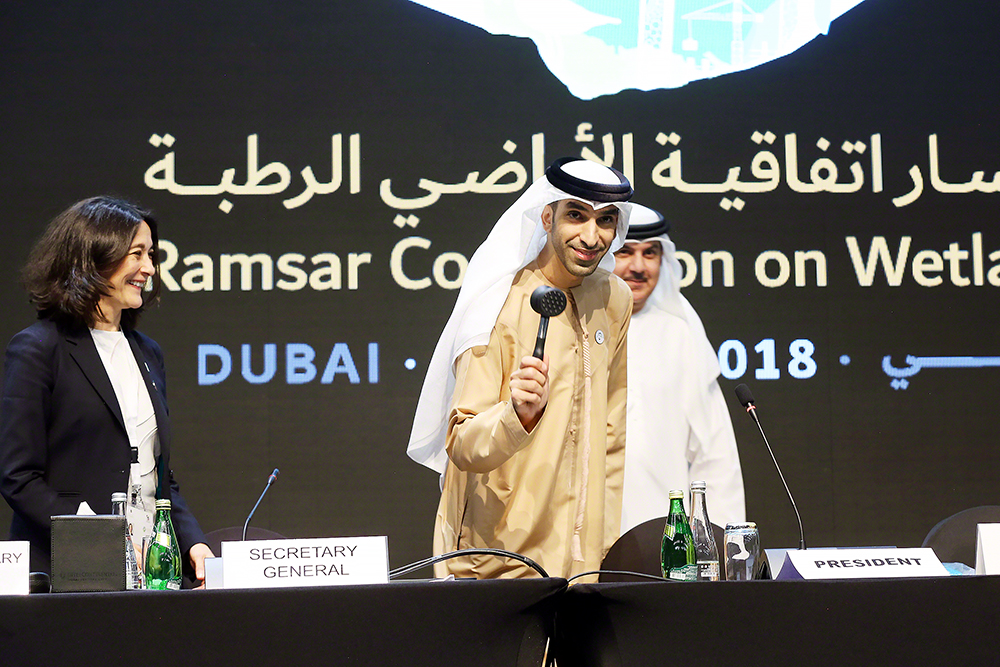
During the morning and afternoon of COP13’s last day, plenary adopted the remaining 11 resolutions, on:
- financial and budgetary matters;
- enhancing the Convention’s implementation, visibility, and synergies with other multilateral environmental agreements;
- Ramsar Regional Initiatives 2019-2021 and their operational framework;
- future implementation of scientific and technical aspects of the Convention for 2019-2021;
- promoting conservation, restoration, and sustainable management of coastal blue carbon ecosystems;
- cultural values, indigenous peoples and local communities, and climate change mitigation and adaptation in wetlands;
- rapid assessment of wetland ecosystem services;
- sustainable agriculture in wetlands;
- promoting the conservation and wise use of intertidal wetlands and ecologically associated habitats;
- wetlands in West Asia; and
- wetlands in the Arctic and sub-Arctic.
Delegates adopted one more resolution acknowledging and thanking the UAE for hosting COP13.
Representatives from the Youth Engaged in Wetlands called on parties and all stakeholders to empower youth to actively participate in wetlands issues, and proposed “Youth in Wetlands” as the COP14 theme.
COP13 President Thani Bin Ahmed Al Zeyoudi, Minister of Climate Change and Environment, UAE, thanked delegates and organizers for their collaboration and team spirit at COP13, which was gaveled to a close at 4:36pm.
Key takeaways from COP13 included:
- a step-by-step plan and timetable for including Arabic as the fourth official Convention language;
- a consensus approach and deft negotiations demonstrating that parties can reach agreement, even on politically sensitive issues, such as cooperation on wise use of wetlands in West Asia; and
- the launch of the Global Wetland Outlook as a significant accomplishment of both the STRP and CEPA Programme, underscoring the urgency and scale of work needed to ensure the conservation and wise use of wetlands.
Please return to this site on 1 November for the Earth Negotiations Bulletin summary and analysis of Ramsar COP13.
+ Visit the web coverage for Monday, 29 October 2018
IISD Reporting Services, through its Earth Negotiations Bulletin (ENB) Meeting Coverage, has provided a curtain raiser, daily web coverage, and a summary and analysis report from COP13.
Photos by IISD/ENB | Francis Dejon
For photo reprint permissions, please follow instructions at our Attribution Regulations for Meeting Photo Usage Page
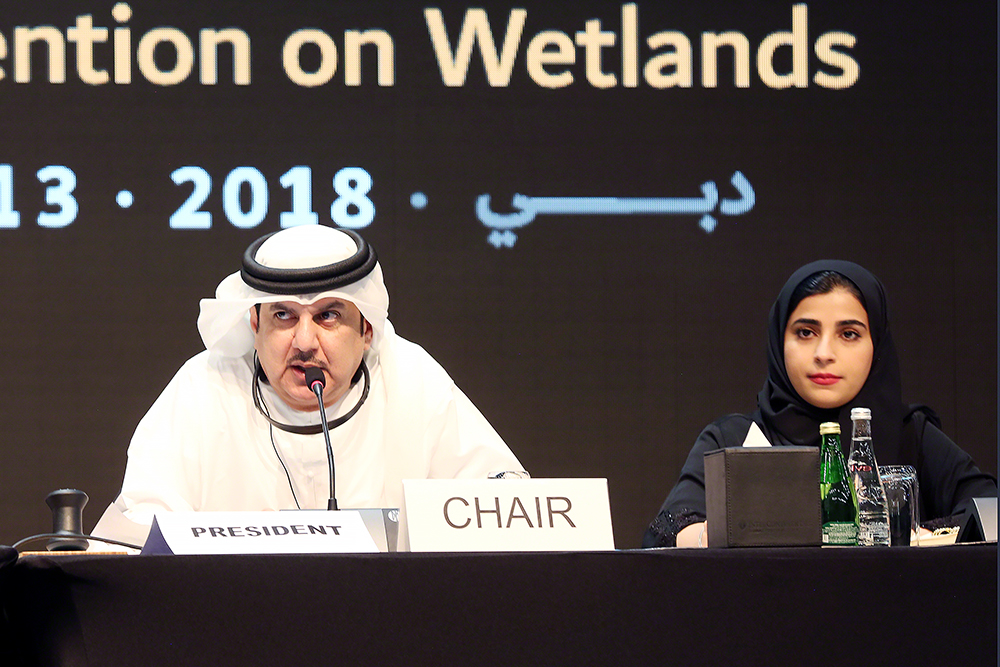
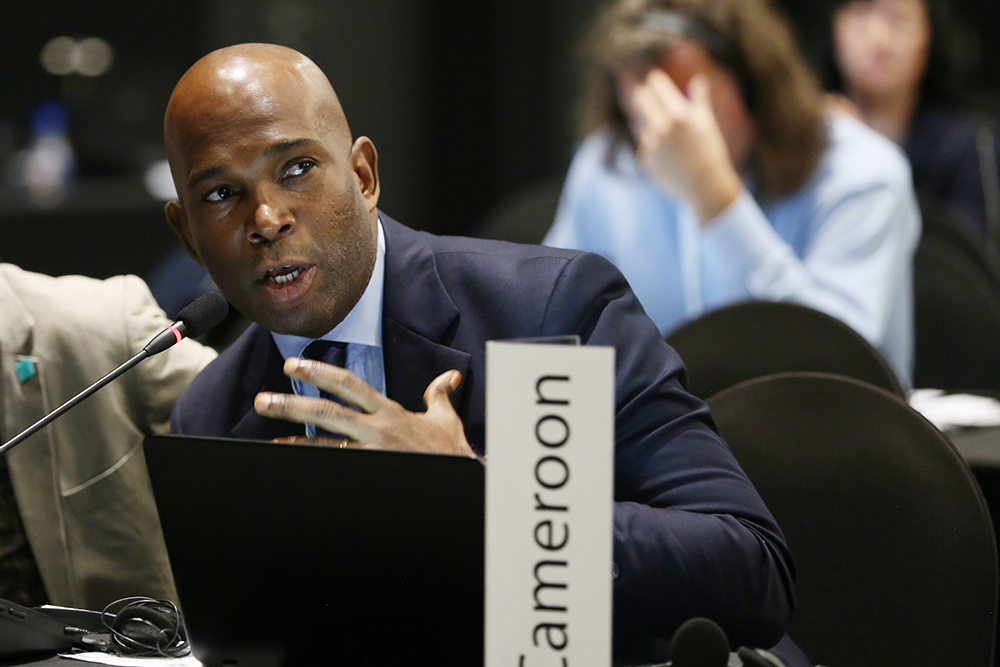
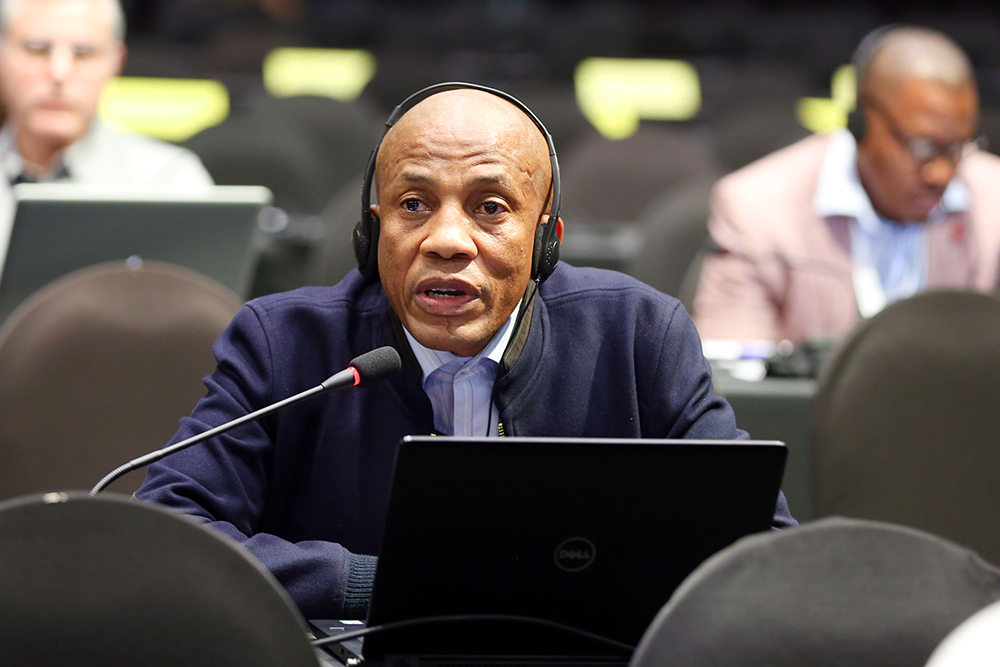
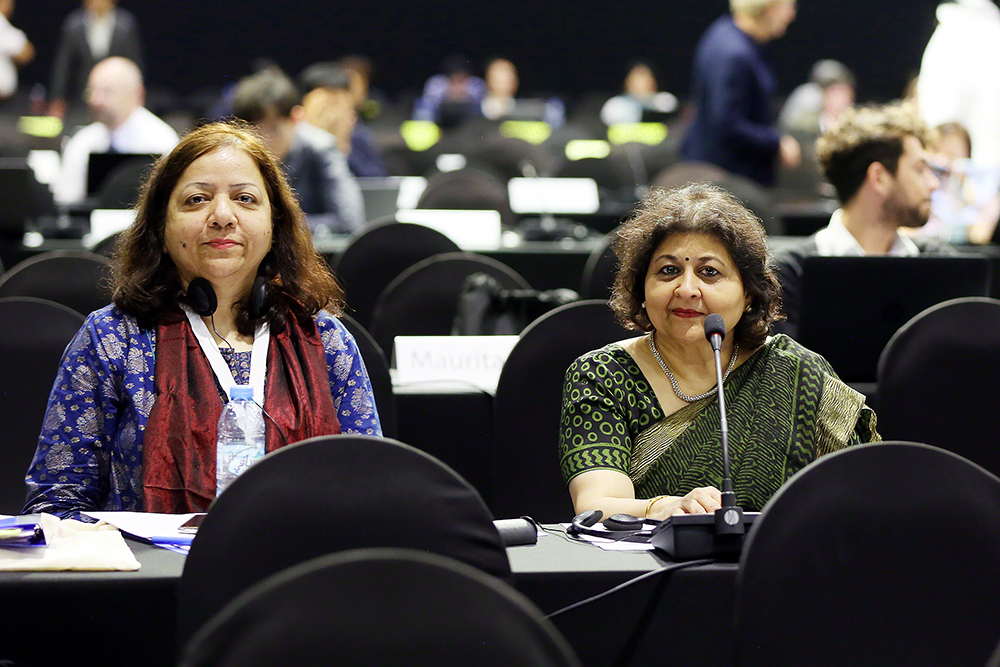
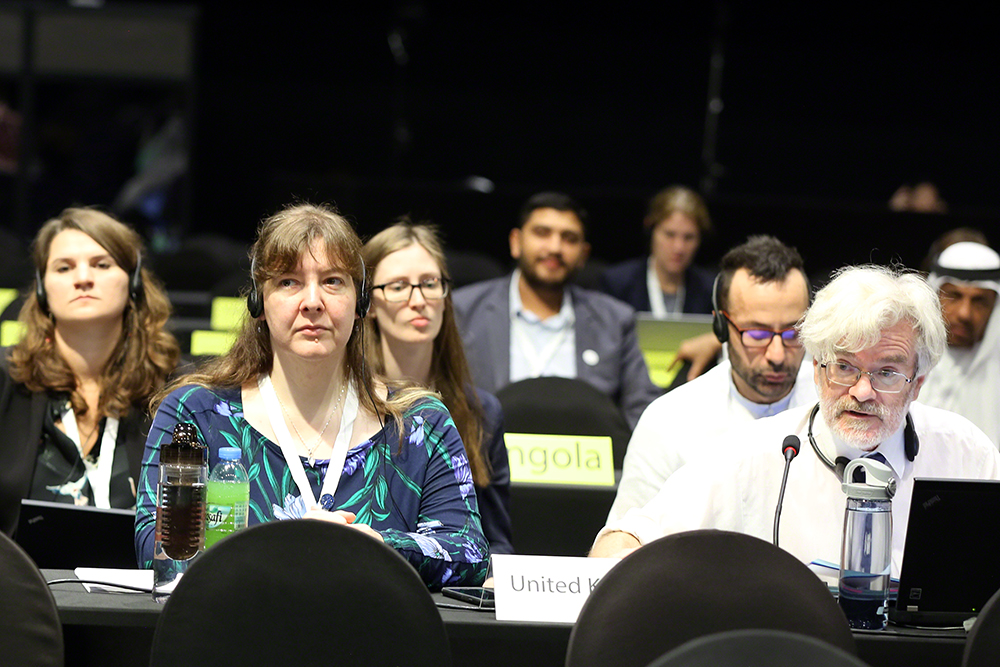
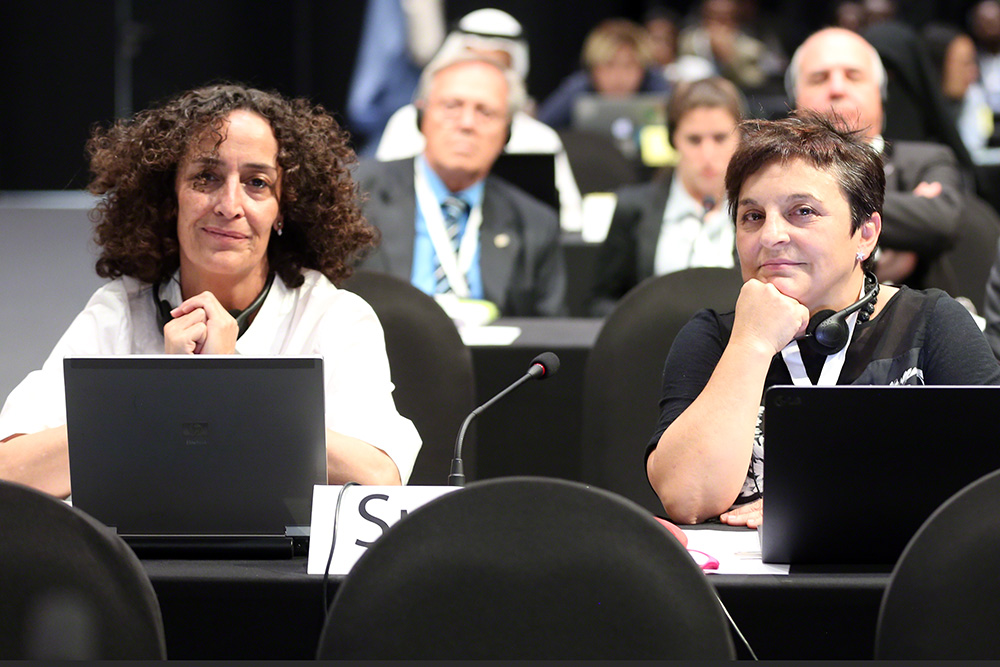
Highlights for Sunday, 28 October 2018
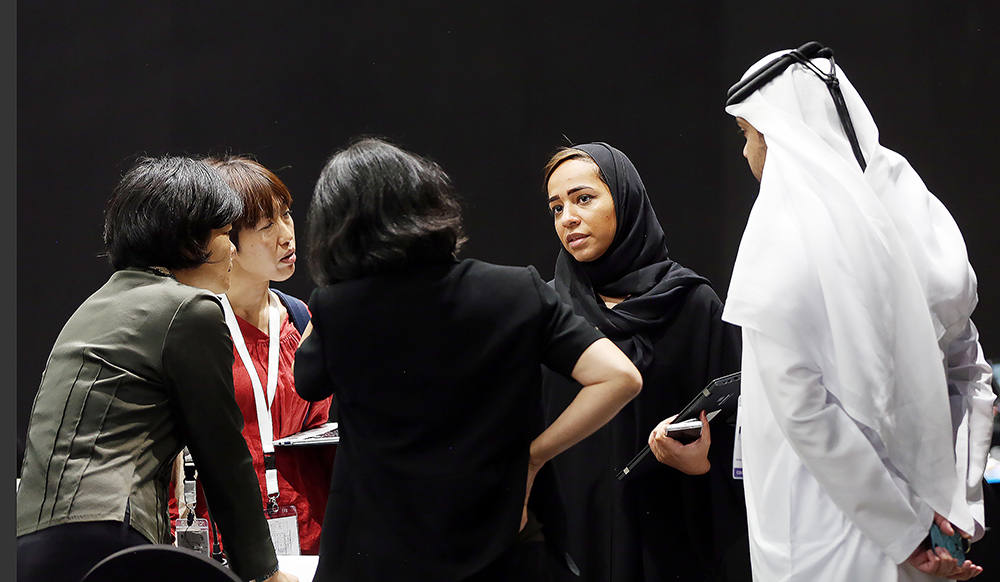
On Sunday, 28 October, plenary met in the morning to hear updates from the Credentials Committee, and updates on discussions from contact and informal groups. They adopted resolutions on:
- governance;
- responsibilities, roles, and composition of the Standing Committee, and regional categorization of countries;
- language strategy;
- Ramsar’s fourth Strategic Plan;
- Ramsar Advisory Missions;
- restoration of degraded peatlands to mitigate and adapt to climate change and enhance biodiversity and disaster risk reduction;
- identifying peatlands as Ramsar Sites for global climate change regulation as an additional argument to existing Ramsar criteria;
- gender and wetlands;
- conservation and management of small wetlands; and
- sea turtle breeding, feeding and nursery areas, and the designation of key areas as Ramsar Sites.
The draft resolution on wetlands and peace and security was withdrawn, with the intent to submit text for consideration by the 59th meeting of the Standing Committee.
Final agreement on some draft resolutions were pending translation, including on:
- financial and budgetary matters;
- enhancing implementation, visibility, and synergies with other multilateral environmental agreements and other international institutions;
- future implementation of scientific and technical aspects of the Convention for 2019-2021;
- promoting the conservation and wise use of intertidal wetlands and ecologically associated habitats;
- wetlands in polar and subpolar regions;
- promoting conservation, restoration and sustainable management of coastal blue carbon ecosystems; and agriculture in wetlands
After the close of plenary, revisions on the remaining resolutions were submitted to the Secretariat, including some with bracketed text, on:
- Ramsar Regional Initiatives 2019-2021;
- cultural values, indigenous peoples and local communities, and climate change mitigation and adaptation in wetlands;
- rapid assessment of wetland ecosystem services; and
- wetlands in West Asia.
As COP13 began to wind down, delegates seemed committed to working through the remaining challenges to complete their work.
+ Visit the web coverage for Sunday, 28 October 2018
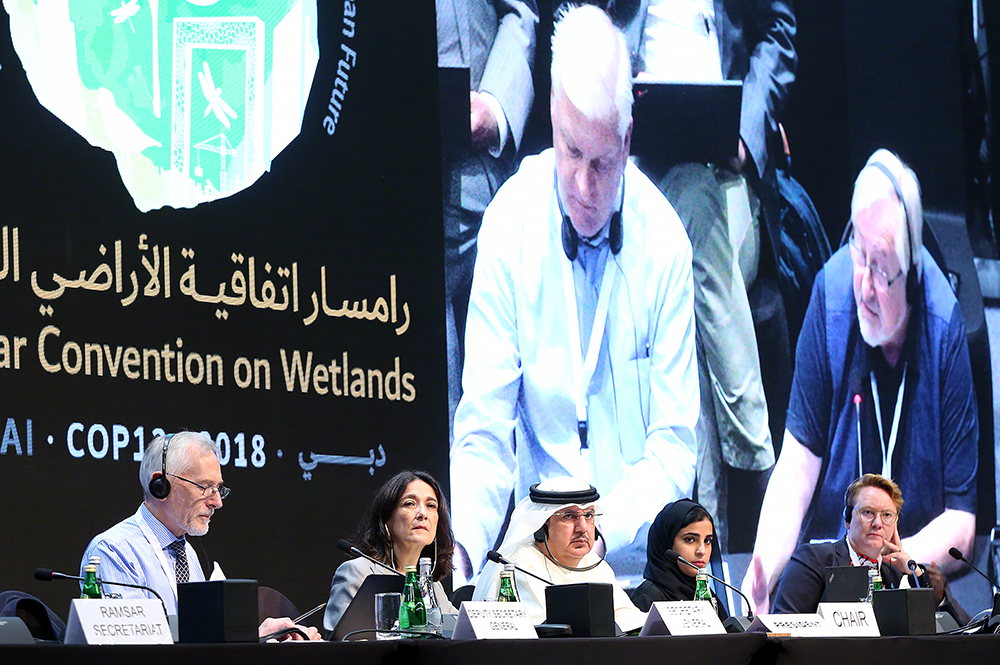
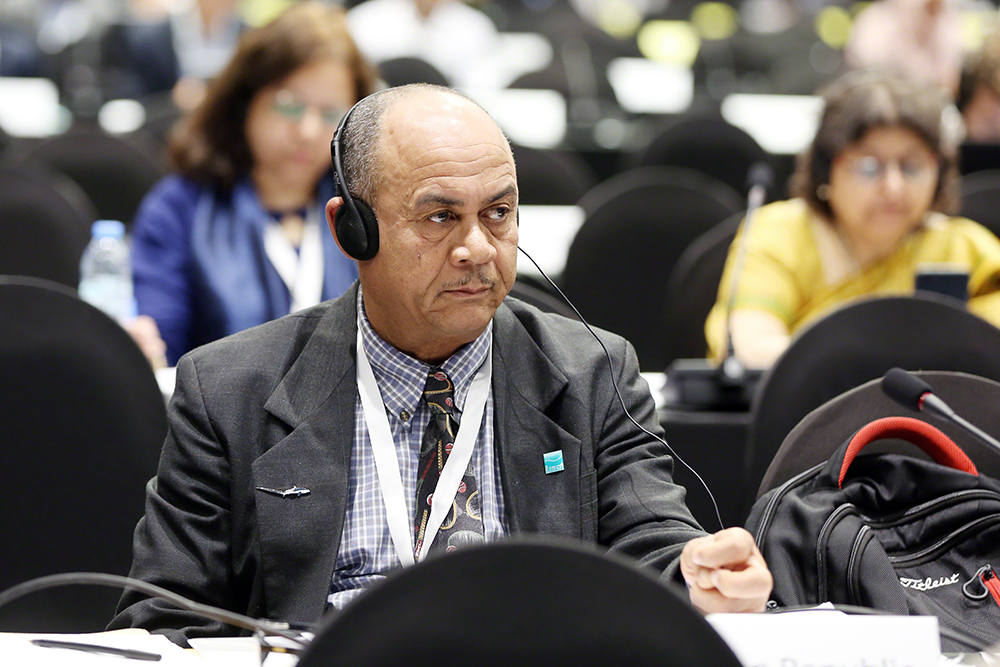
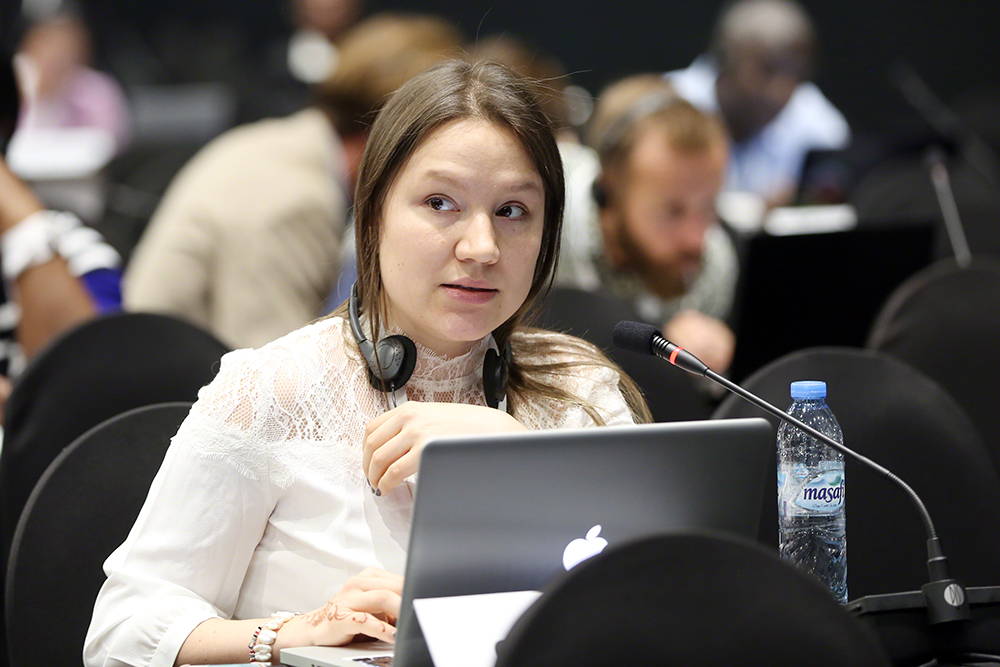
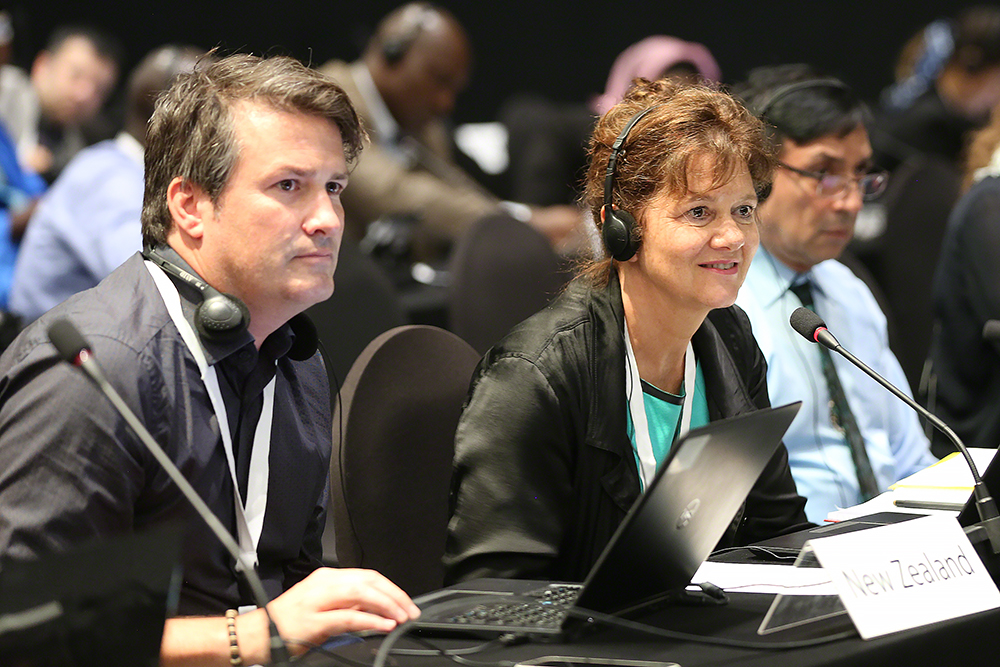
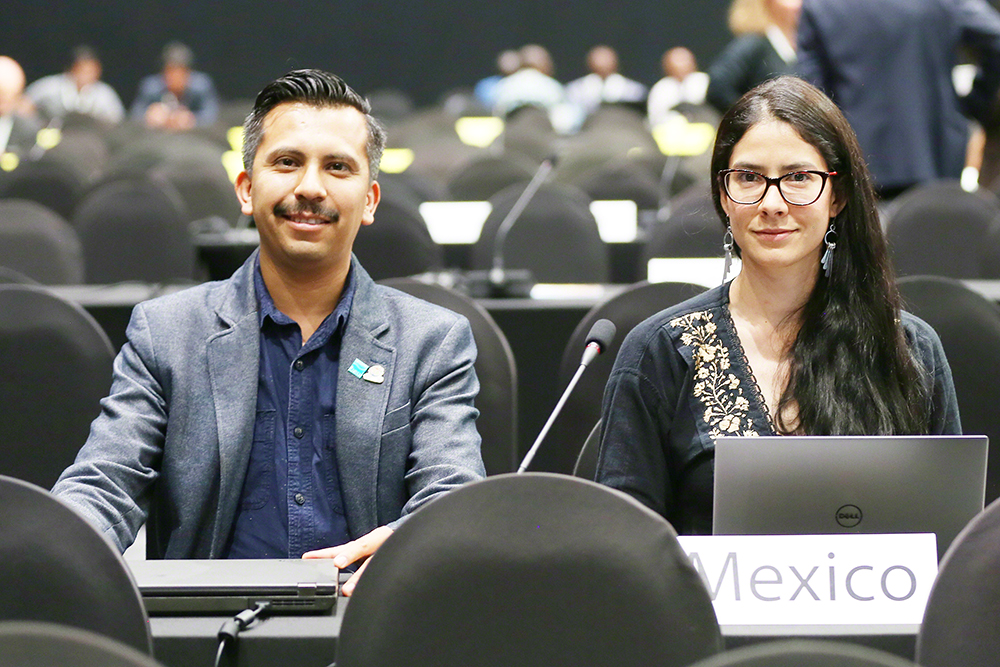
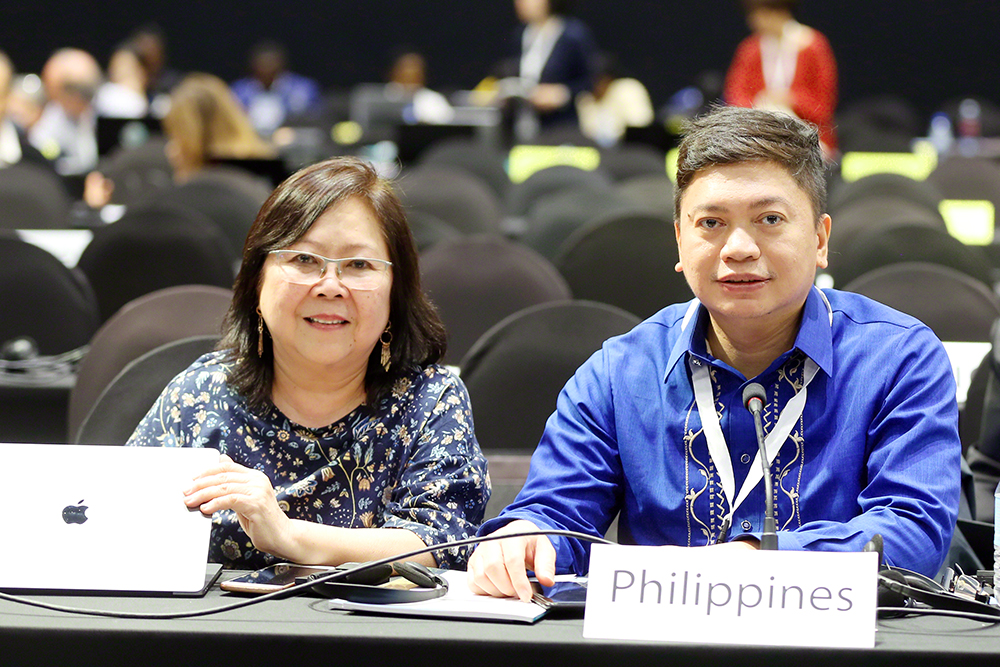
Photo Highlights for Saturday, 27 October 2018
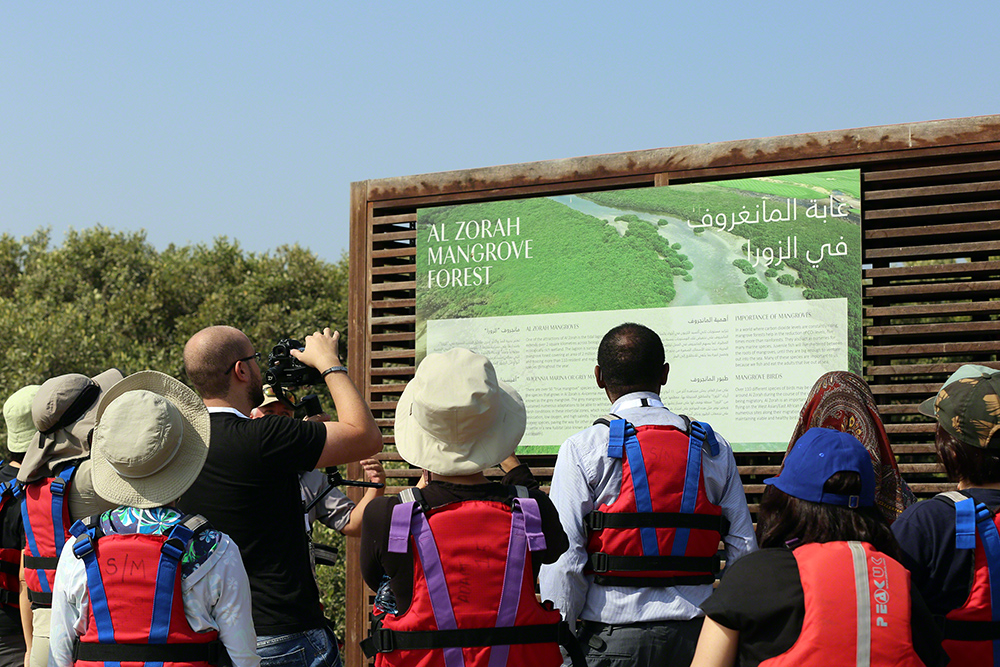
On Saturday, October 27, delegates took advantage of a number of field trip opportunities, including visits to several Ramsar wetlands.
A trip to Al Zorah, in the Emirate of Ajman, included a kayak trip and a visit to the Sharjah Natural History Museum.
Participants kayaked on the tidal lagoon, with grey mangroves flanking the sides, where they saw flamingos, herons, egrets, cormorants, terns, and jumping fish. They planted mangrove saplings as part of a restoration project and were informed the new plantings were under water by the time they reboarded the bus.
The Al-Zorah Protected Area, a portion of the lagoon, was added to the Ramsar List of Wetlands of International Importance in 2016. The protected area lies at the end of Ajman Creek, where it flows into the Gulf. Dominated by mangrove forests, the area also includes other coastal and inland wetland types such as intertidal mudflats, lagoons and creeks.
The kayak tour was hosted was the Municipality of Ajman.
+ Visit the web coverage for Saturday, 27 October 2018
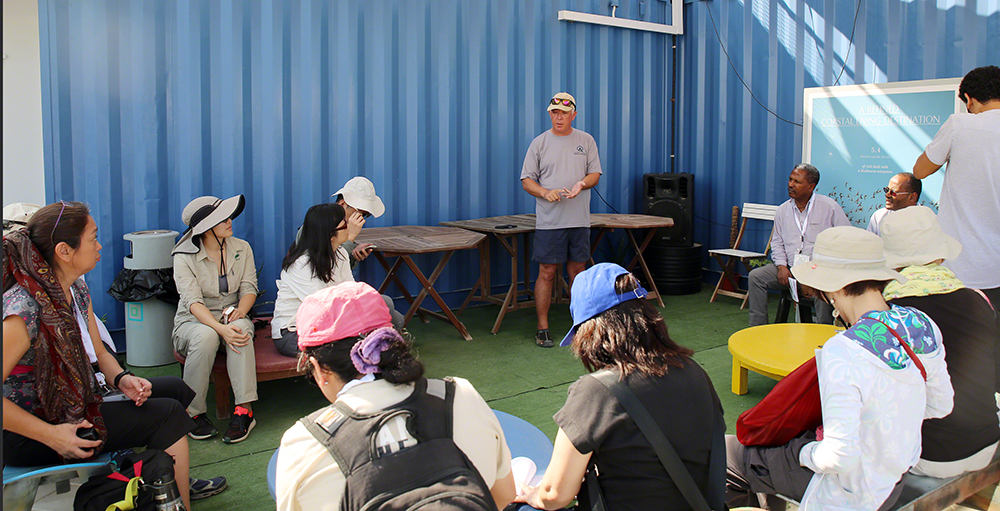
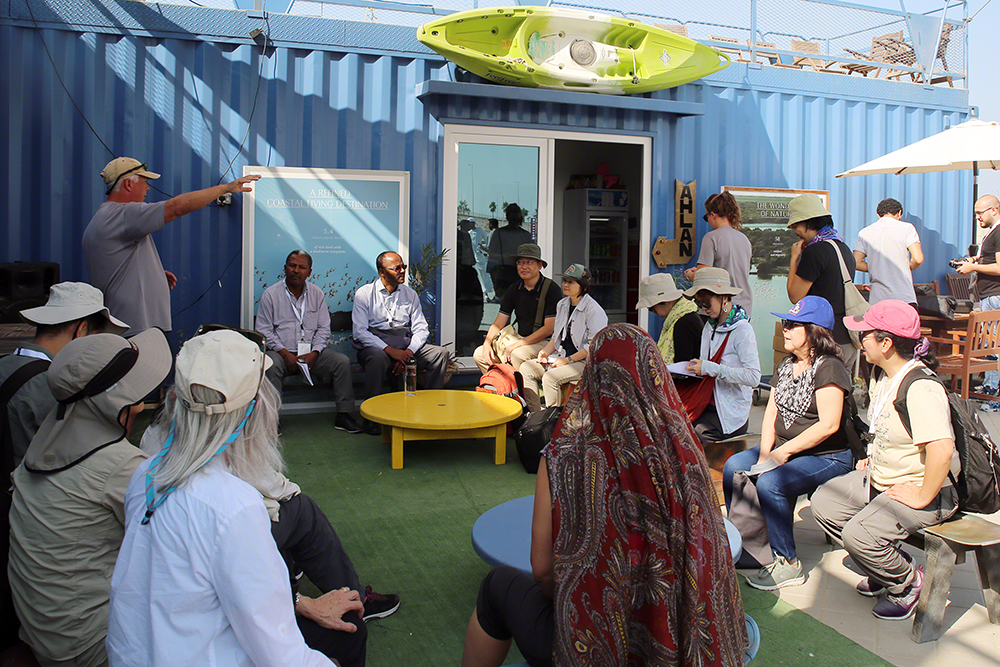
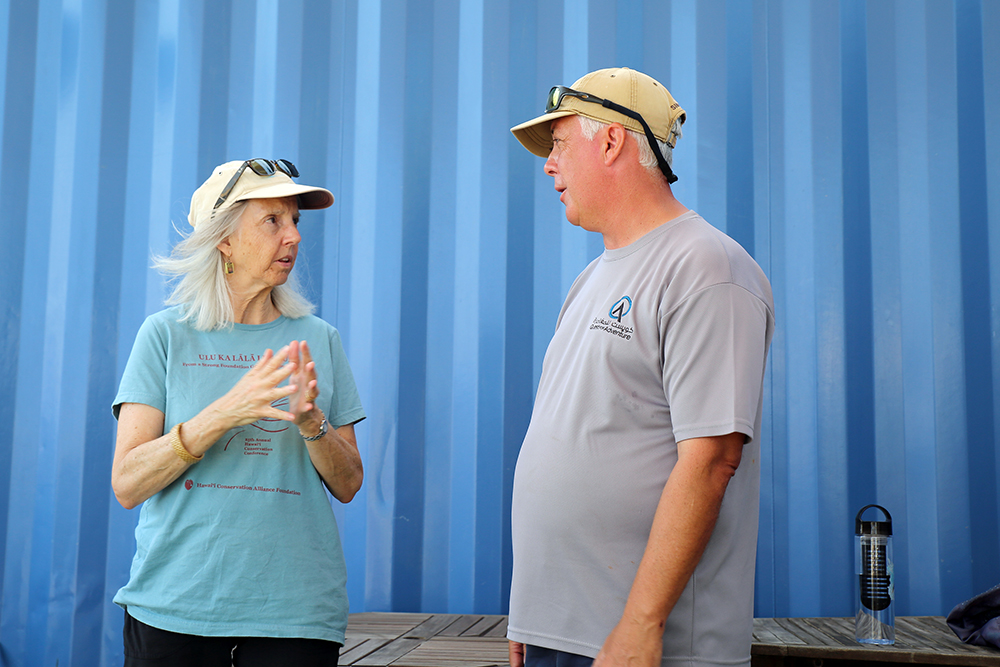
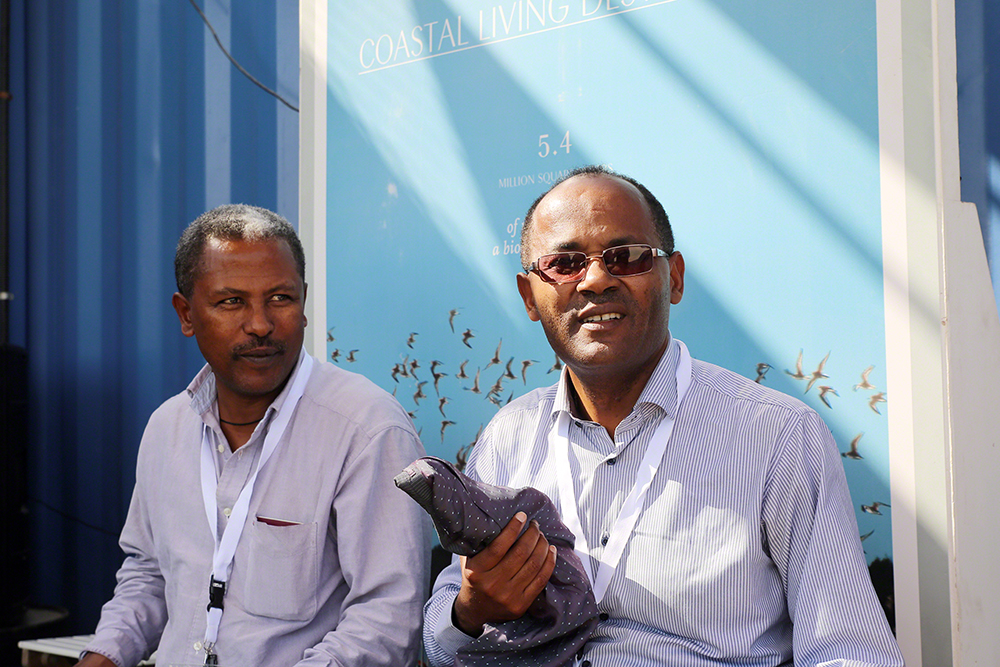
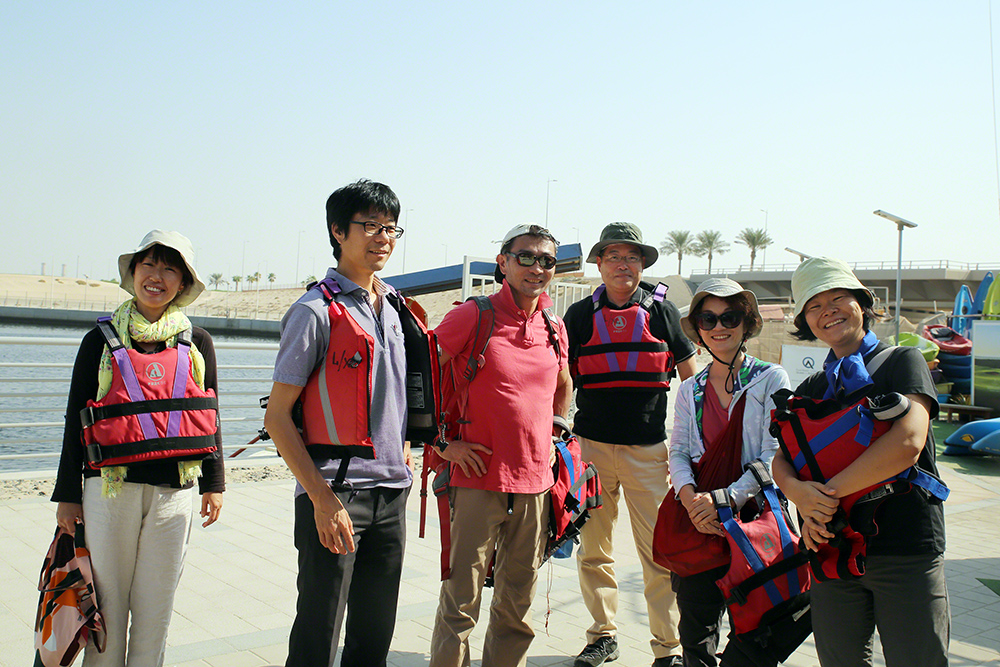
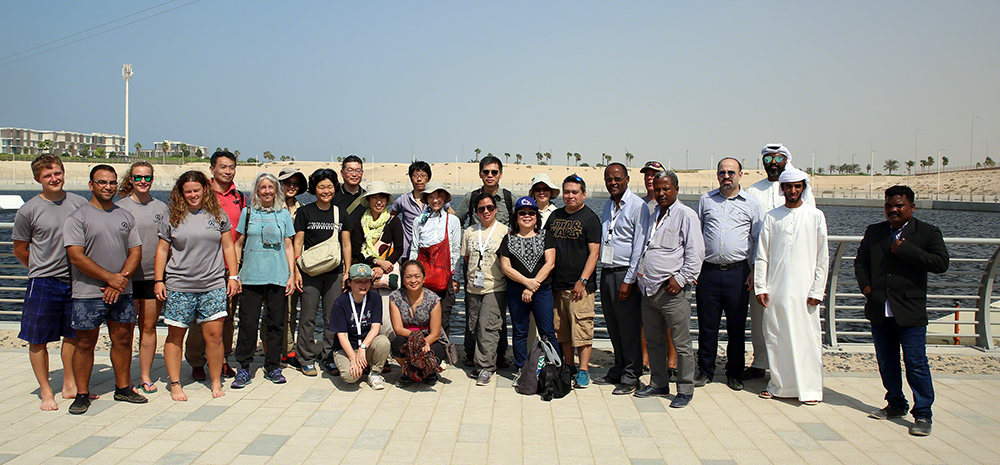
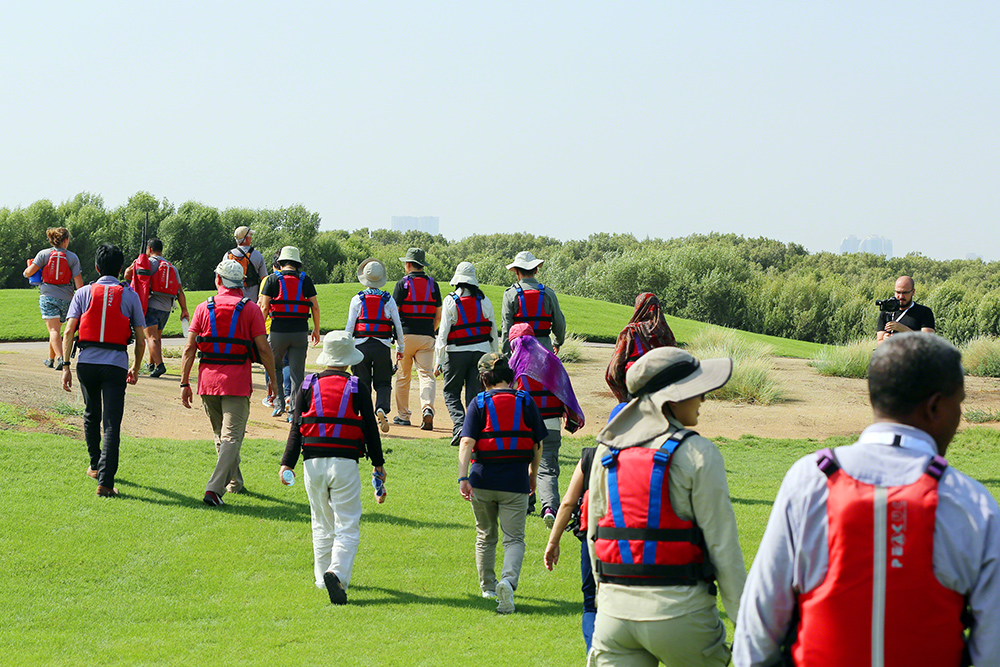
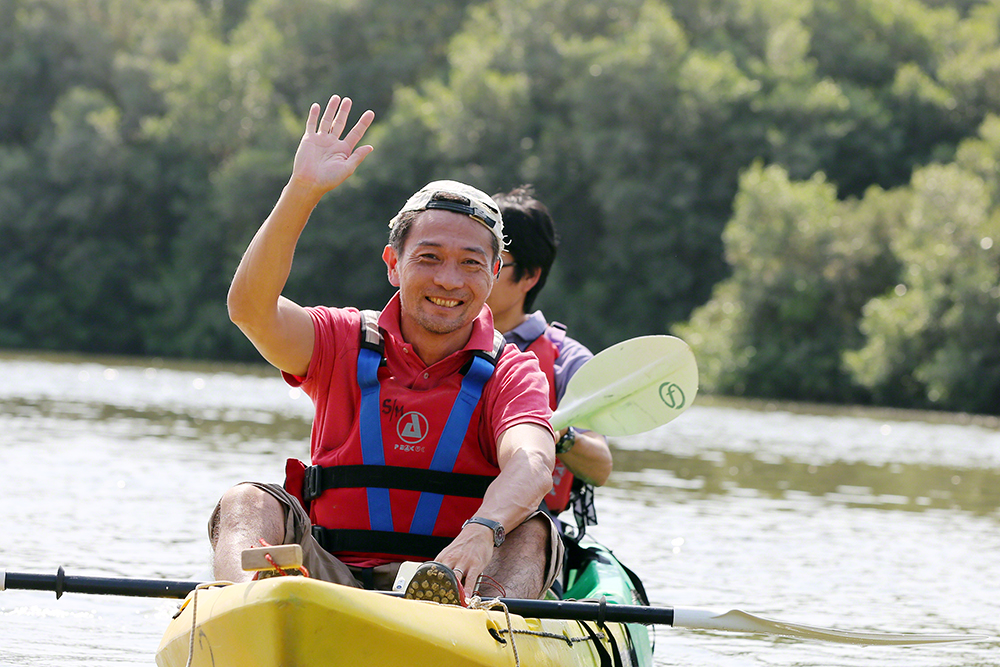
Highlights for Friday, 26 October 2018
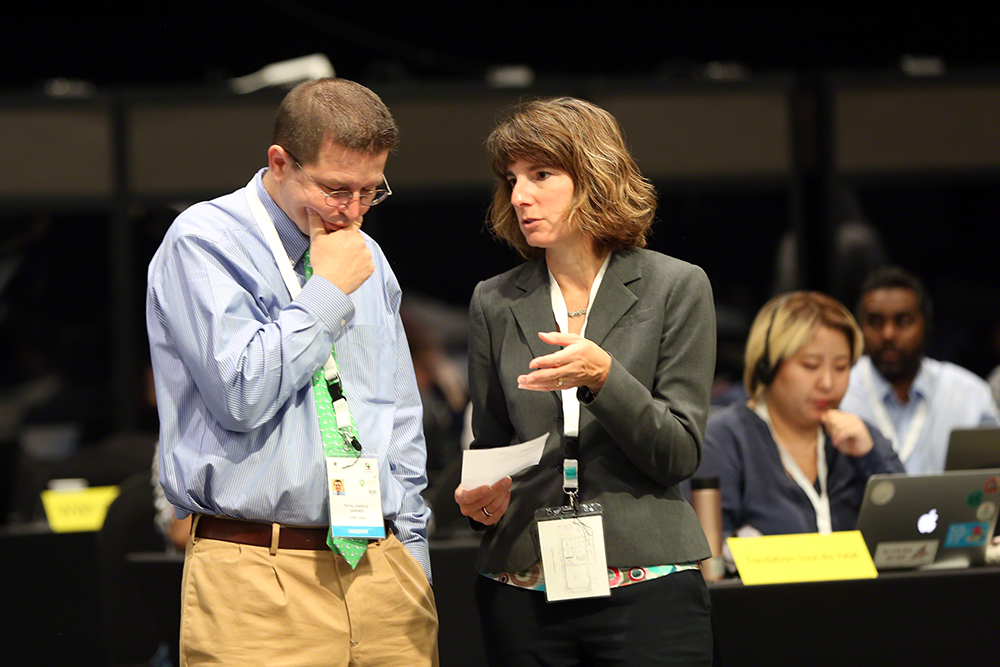
On Friday morning, COP13 elected the following parties to the Standing Committee for the coming triennium: Chad, Algeria, Uganda, Sierra Leone, and Zambia for Africa; the UK, Sweden, Armenia, and Azerbaijan for Europe; Australia for Oceania; Mexico for North America; Bhutan, Japan, and Oman for Asia; and Uruguay, Costa Rica, and the Dominican Republic for Central and South America and the Caribbean.
Delegates then resumed consideration of draft resolutions, focusing on:
- rapid assessment of wetland ecosystem services;
- gender and wetlands;
- agriculture in wetlands; and
- intertidal wetlands and ecologically associated habitats.
In the afternoon, delegates completed the first review of all draft resolutions with discussions on:
- conservation and management of small wetlands; and
- wetlands in West Asia.
Plenary returned to the issue of the Convention’s governance to discuss compromise text replacing two earlier draft proposals, which would: retire seven subsidiary bodies and establish an Effectiveness Working Group to review the governance structure intersessionally, including with assistance of an independent consultant.
On a separate draft resolution on the responsibilities, roles, and composition of the Standing Committee, delegates agreed to have terms of reference defined for the Executive Team, for approval by SC57.
Key takeaways from the day included:
- COP13 seems to agree that a more thorough and independent diagnosis for at least some of its internal functions is needed before electing surgery;
- the time crunch is ever more apparent: four contact groups and up to 13 Friends of the Chair groups had to complete their work before day’s end to submit consensus text for translation; and
- Saturday field trips to local wetlands may provide both rejuvenation and a sense of urgency to help delegates bring it all together by the close of COP13.
+ Visit the web coverage for Friday, 26 October 2018
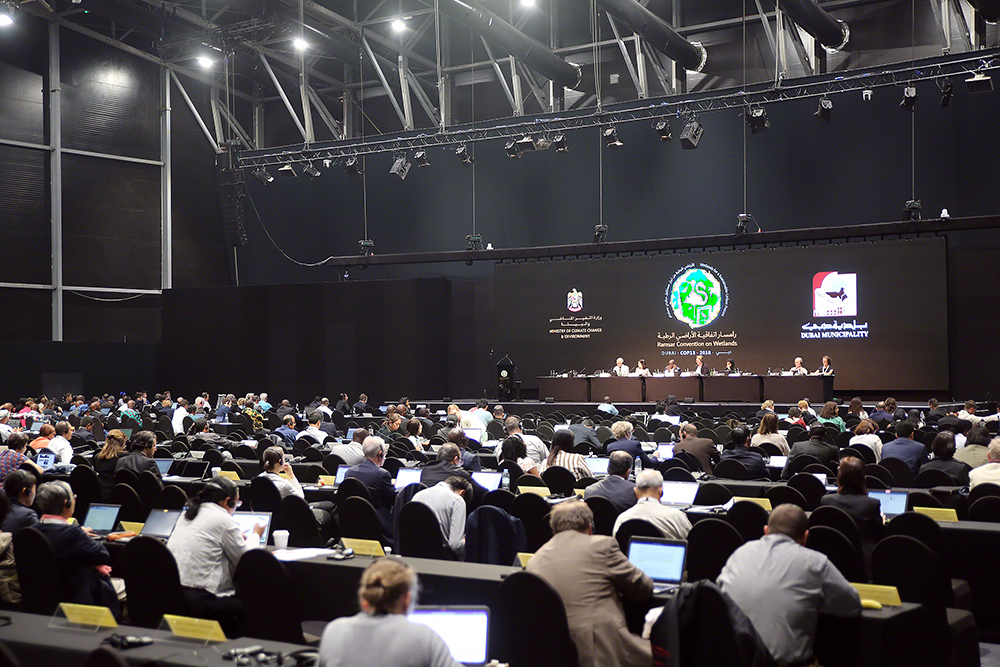
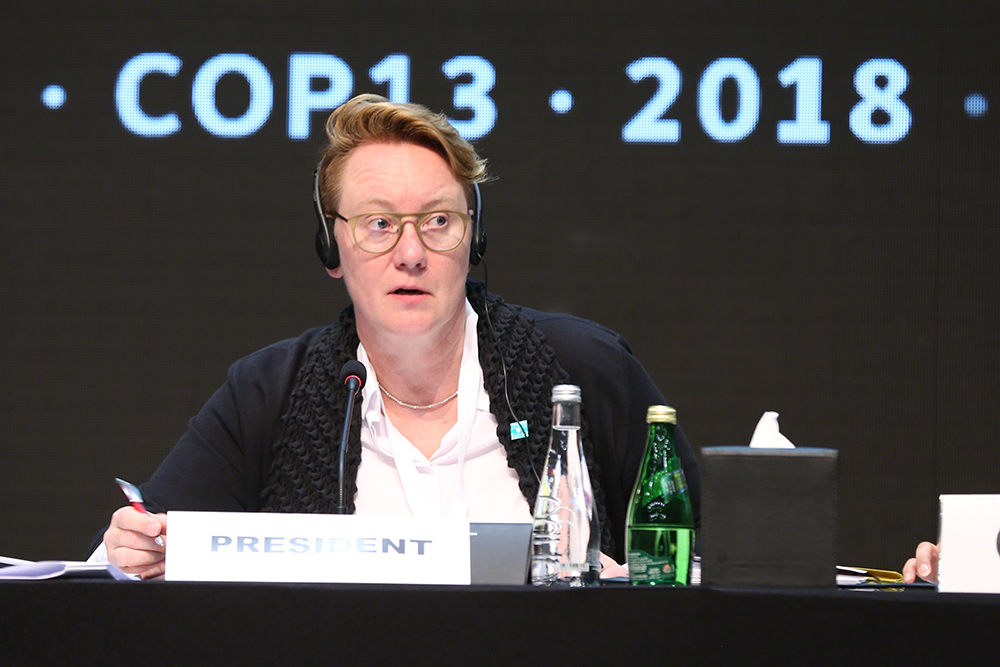
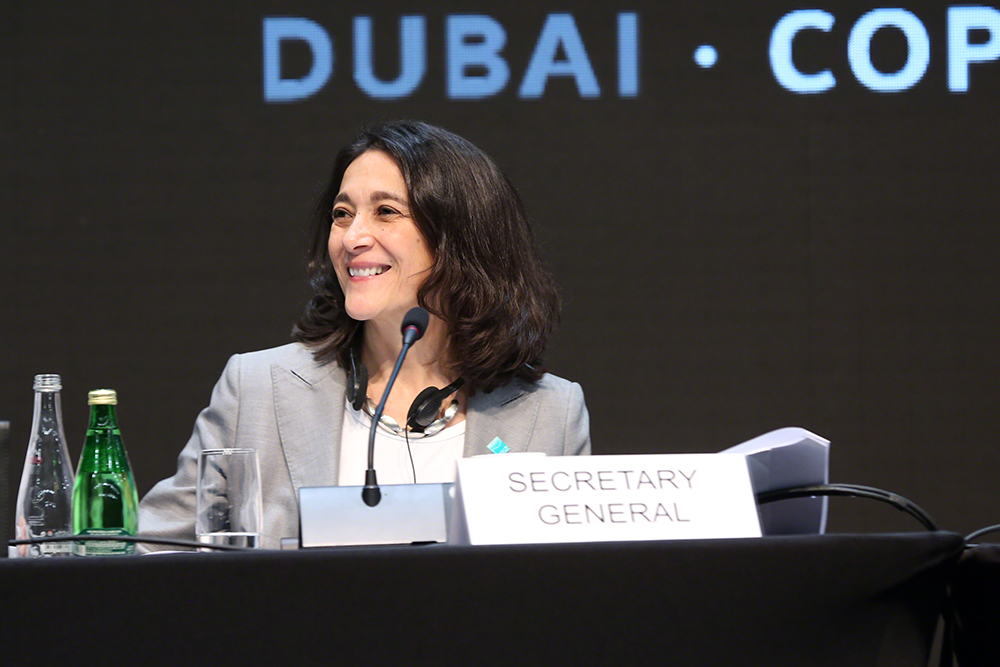
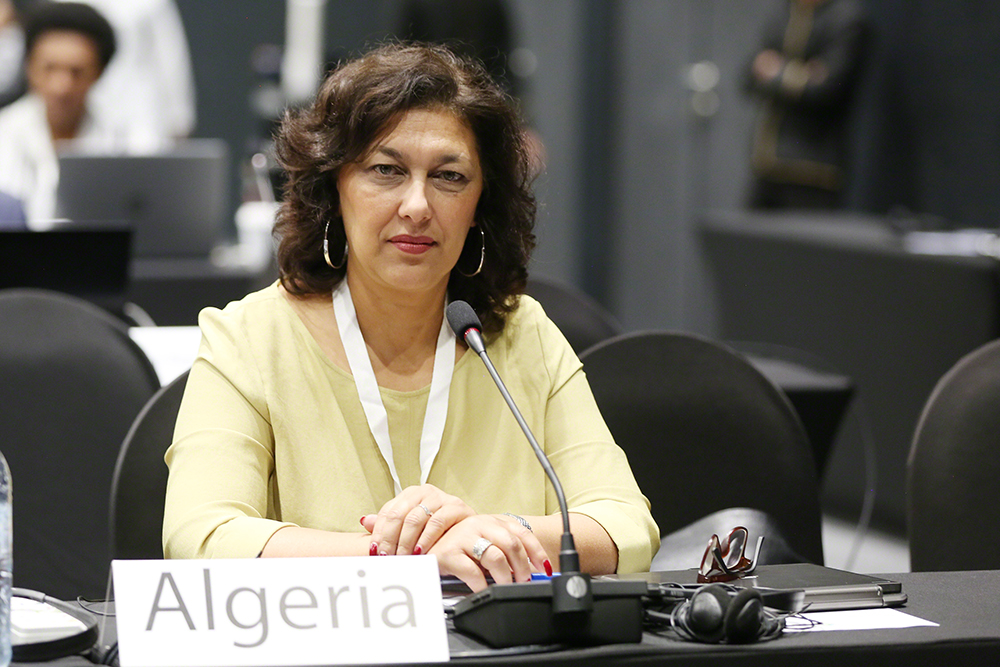
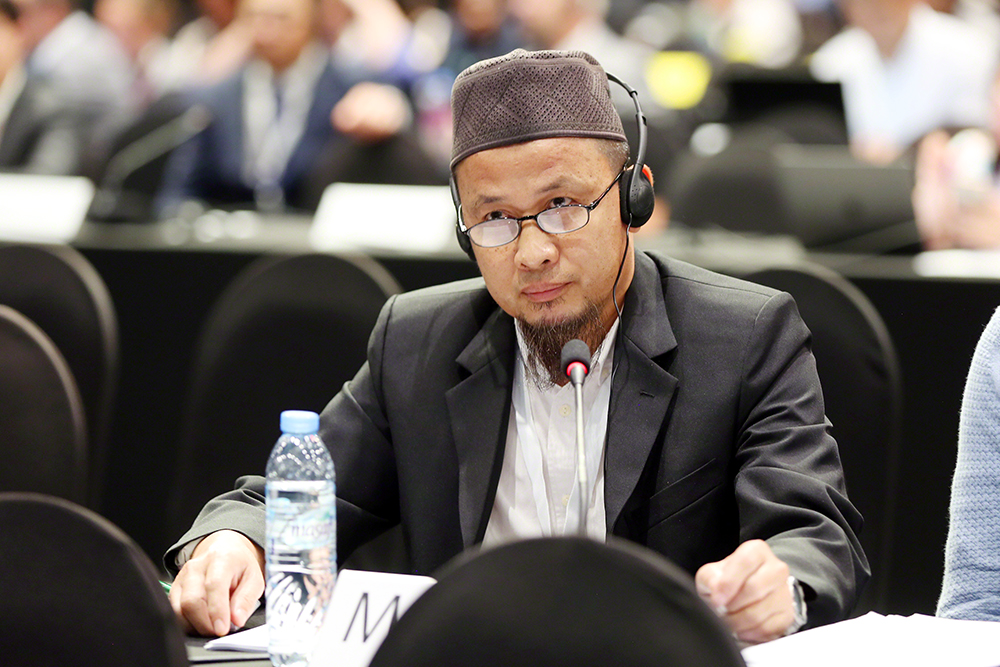
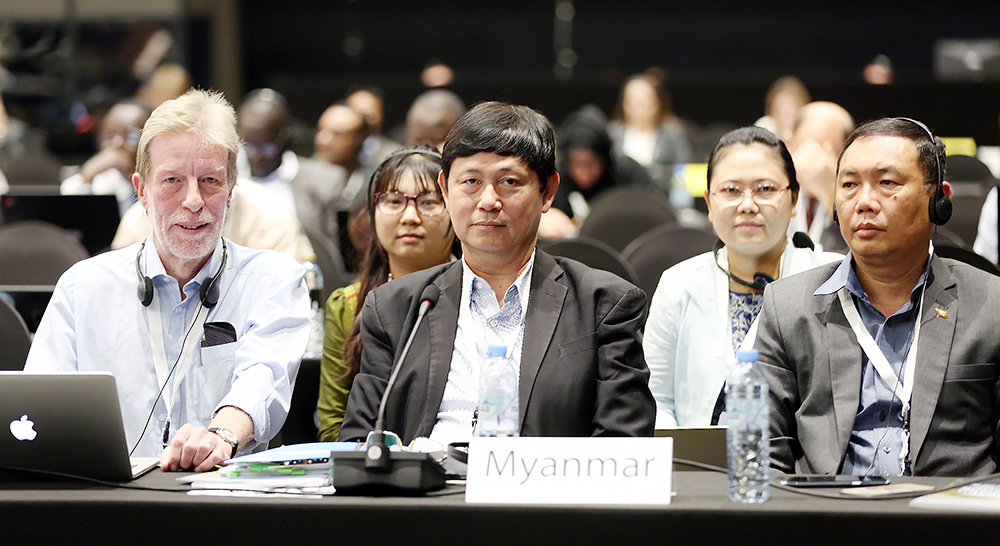
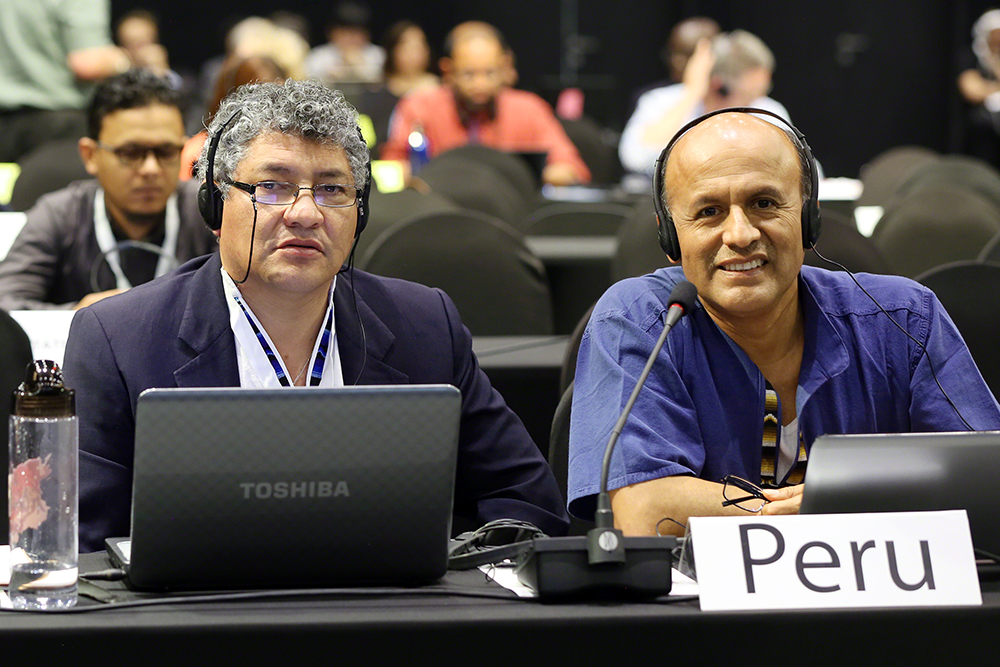
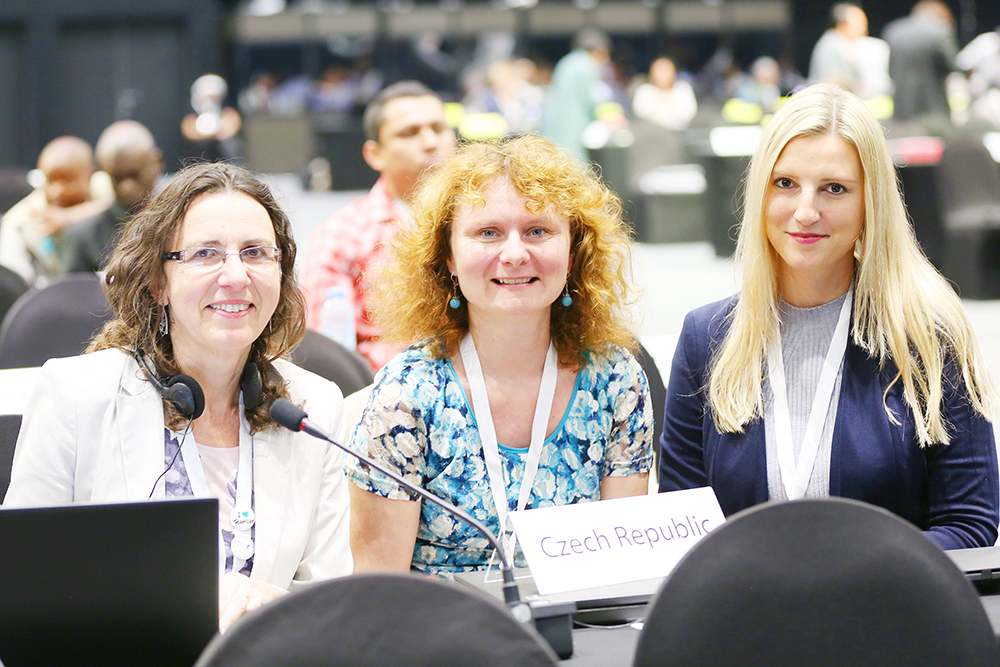
Highlights for Thursday, 25 October 2018
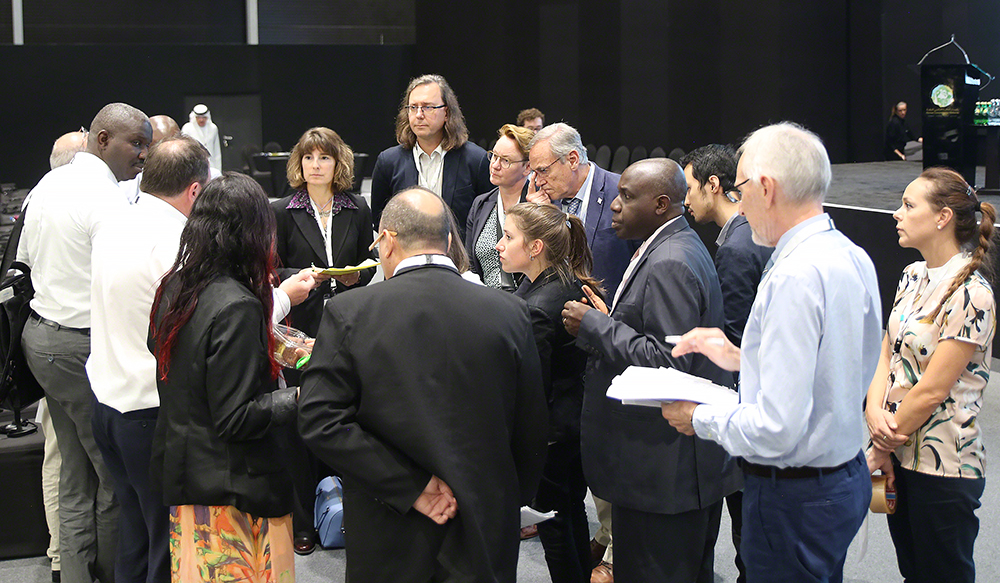
On Thursday morning, COP13 met in plenary to consider draft resolutions on:
- sea turtle breeding, feeding, and nursery areas, and the designation of key areas as Ramsar Sites;
- future implementation of scientific and technical aspects of the Convention for 2019-2021; and
- Ramsar Advisory Missions.
Delegates also heard the report of the Standing Committee on the Ramsar Wetland City Accreditation approving 18 cities. At the beginning of the afternoon plenary, the Ramsar Secretariat presented accreditation certificates to mayors and other dignitaries from 18 cities from China, France, Republic of Korea, Tunisia, Madagascar, Hungary, and Sri Lanka. The event was commemorated with a side event at the close of plenary.
Delegates then considered draft resolutions on:
- guidance on identifying peatlands as Ramsar Sites for global climate change regulation;
- restoration of degraded peatlands to mitigate and adapt to climate change and enhance biodiversity;
- promoting conservation, restoration, and sustainable management of coastal blue carbon ecosystems; and
- sustainable urbanization, climate change and wetlands.
Delegates met in contact groups on various proposed draft resolutions in the morning and evening.
Key takeaways for the day included:
- references to climate change making an appearance in many, if not most of the draft resolutions considered during the day;
- the successful launch of the Wetland City Accreditation programme, demonstrated by the presence of local dignitaries and officials attending the certificate ceremony; and
- the increasing pace of work needed by contact groups and Friends of the Chair, if COP13 is to meet its deadline of having all draft revisions submitted by the end of Friday.
+ Visit the web coverage for Thursday, 25 October 2018

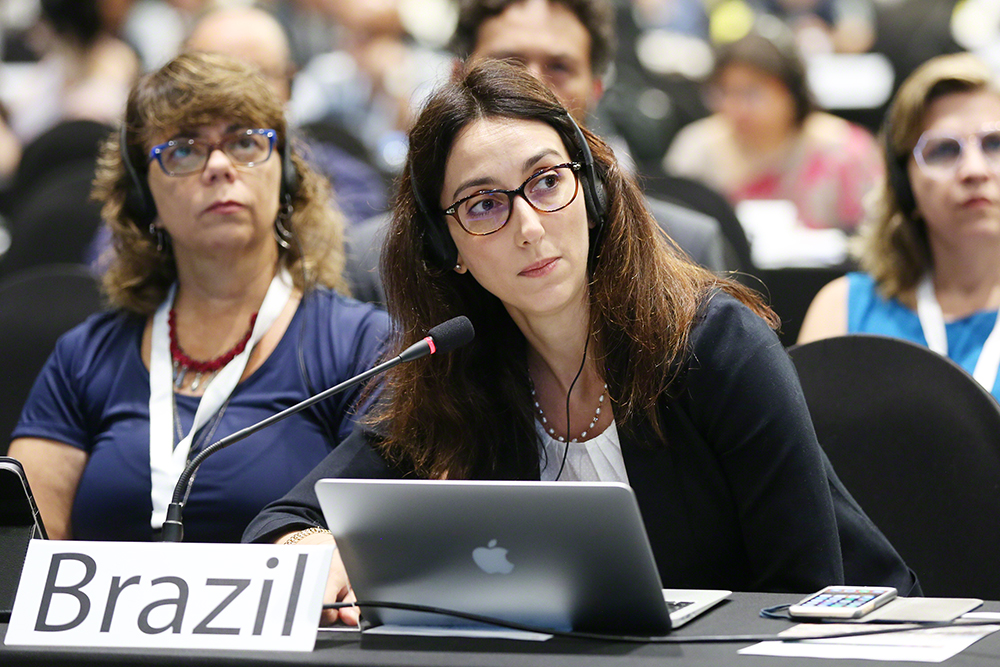
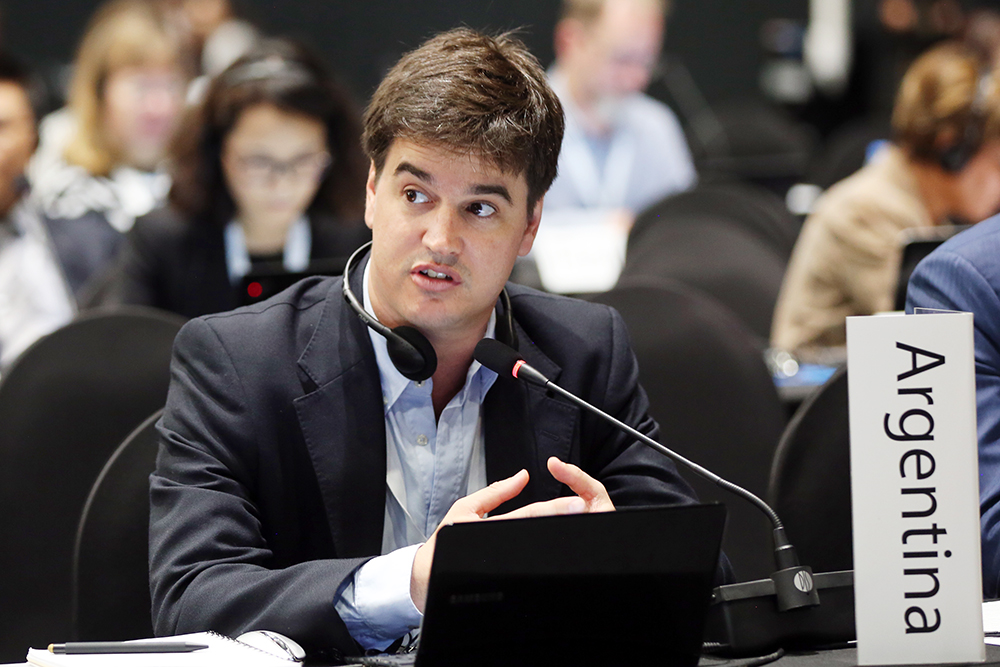

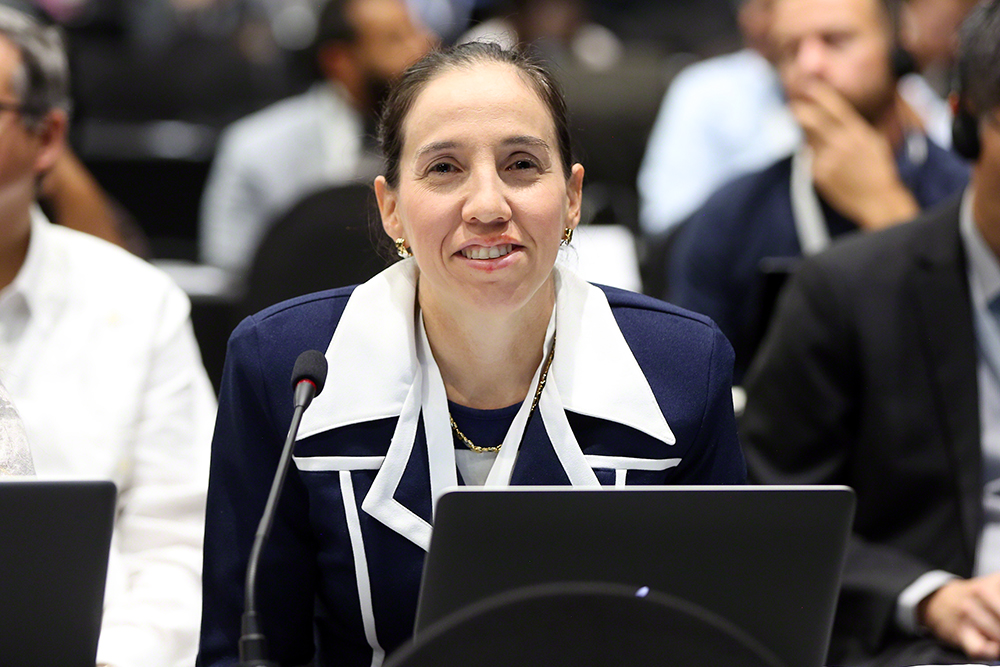
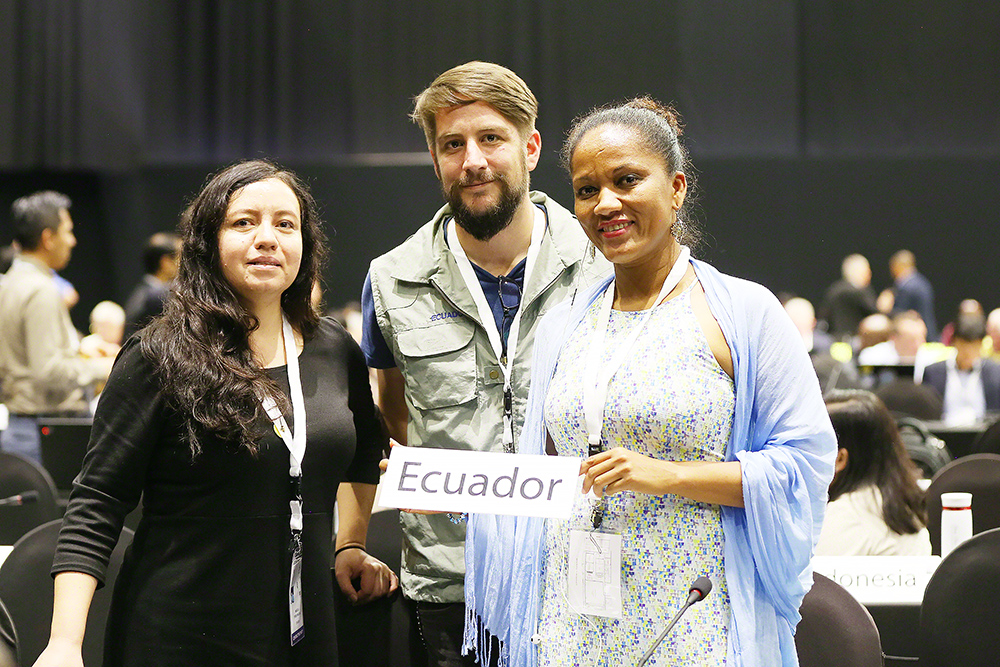
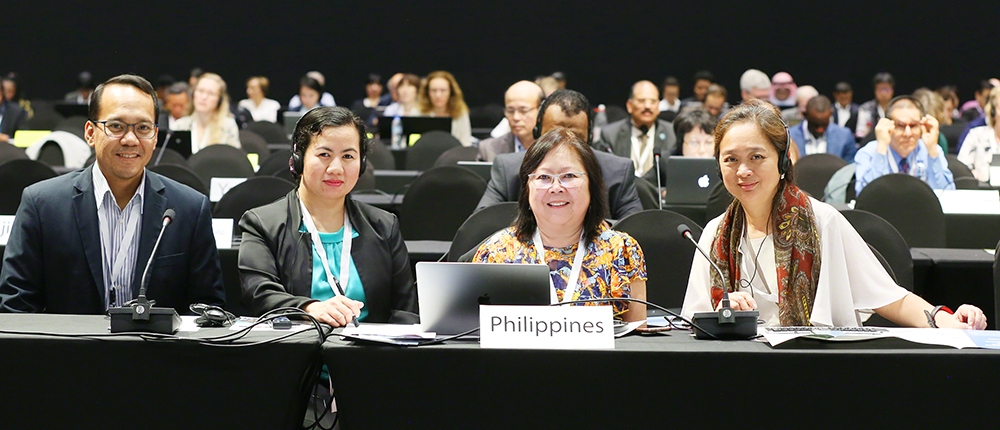
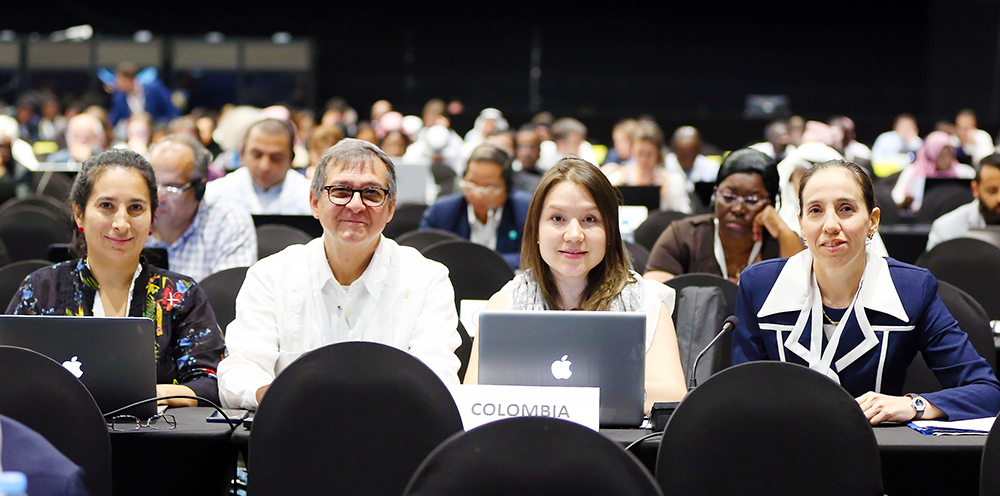
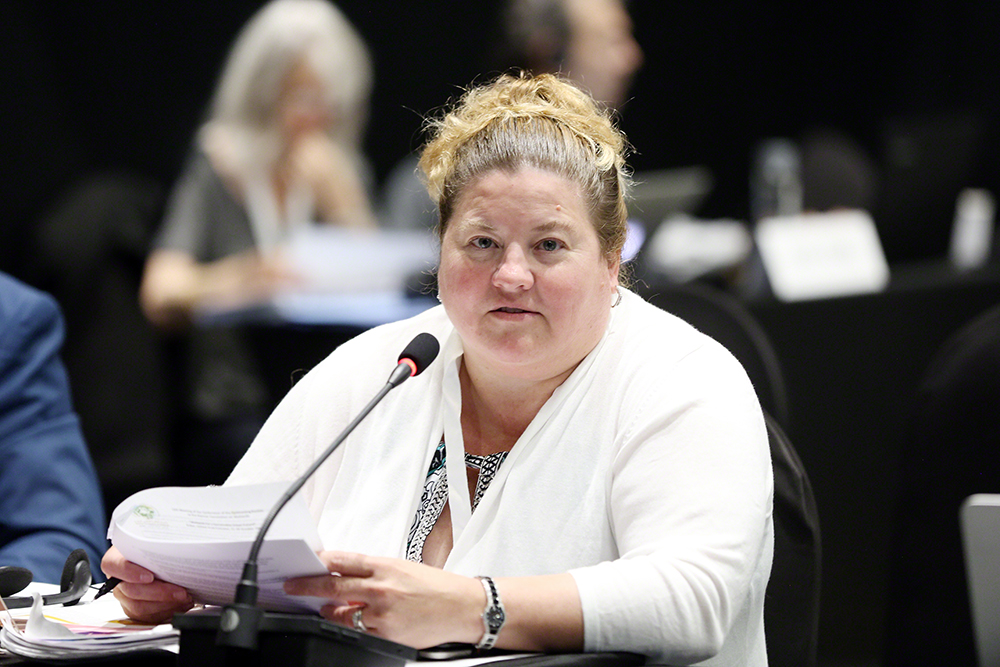
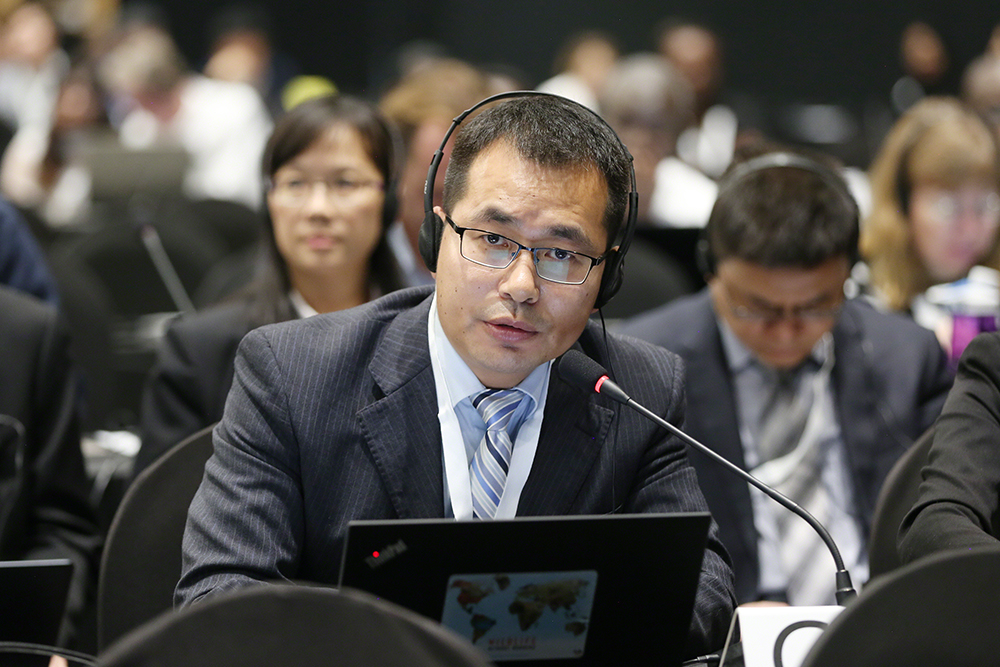
Highlights for Wednesday, 24 October 2018
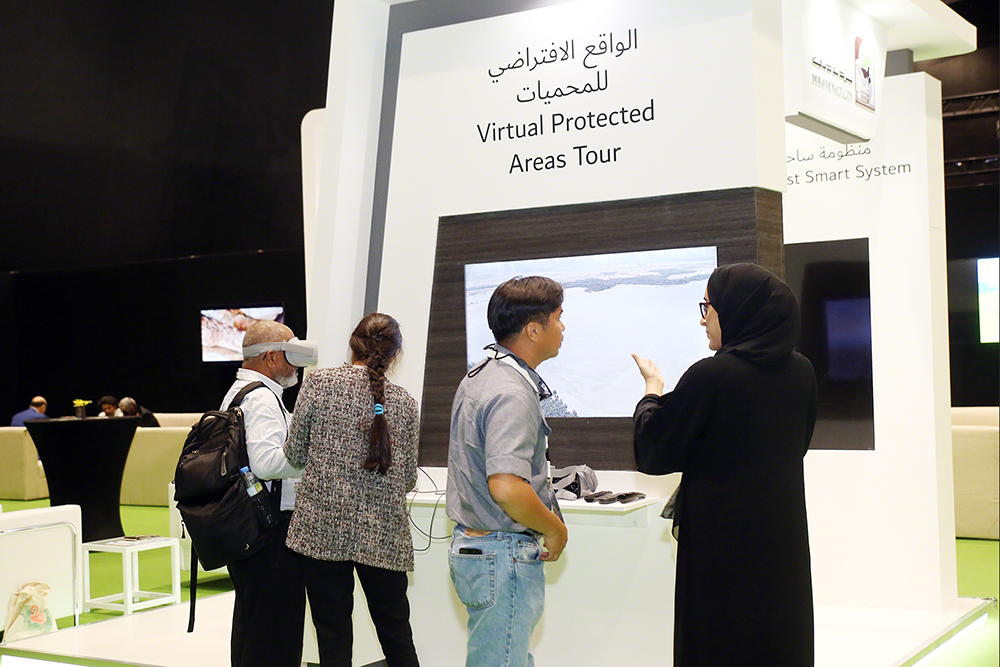
On Wednesday, COP13 met in plenary throughout the day.
In the morning, delegates began working through the 26 draft resolutions and recommendations with discussions on:
- inviting the UN General Assembly to designate 2 February as World Wetlands Day;
- suggested changes to the Convention’s governance, as outlined in three proposed resolutions; and
- the language strategy for the Convention, including adding Arabic as the fourth official Convention language.
In the afternoon, delegates considered draft resolutions on:
- the importance of wetlands for peace and security;
- the review of the fourth Strategic Plan;
- enhancing implementation, visibility and synergies with other MEAs and international institutions;
- wetlands in polar and subpolar regions;
- Ramsar Regional Initiatives 2019-2021 and their operational framework; and
- sites on the List of Wetlands of International Importance.
Contact groups met in the afternoon and evening on: credentials; finance and budgetary matters; governance issues; language strategy; wetlands for peace and security; and wetlands in polar and subpolar regions. A contact group on regional initiatives was also established.
Key takeaways included:
- agreement that changes to Ramsar’s governance are needed, but divergent views about the best approach will likely require extended discussions throughout the week; and
- with six working groups established, it is evident that the parties are fully engaged in key substantive issues, but time and space limitations may pose scheduling challenges and create burdens for small delegations.
+ Visit the web coverage for Wednesday, 24 October 2018

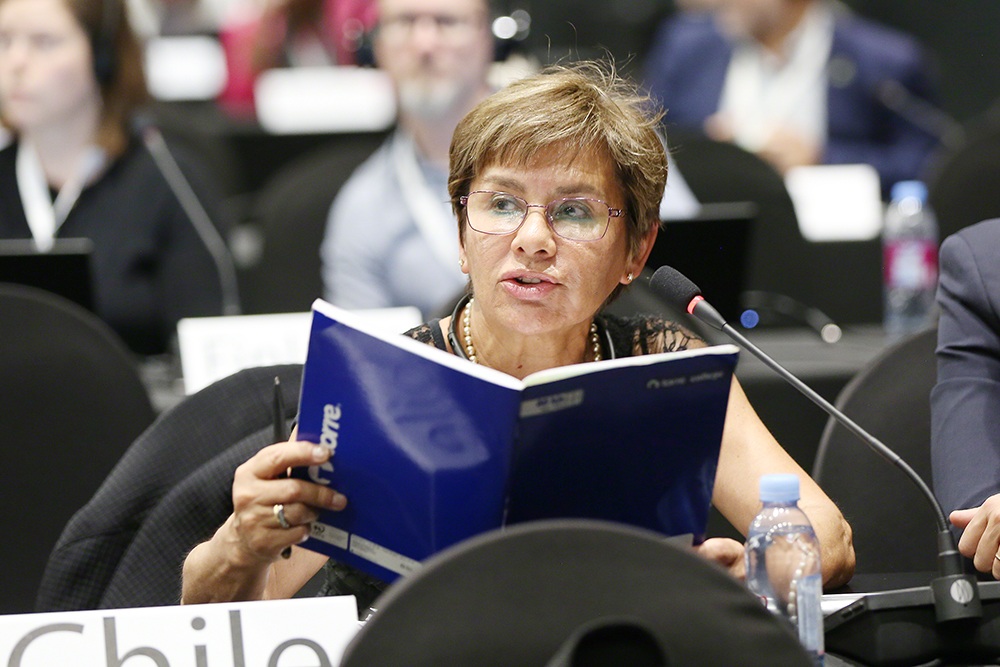
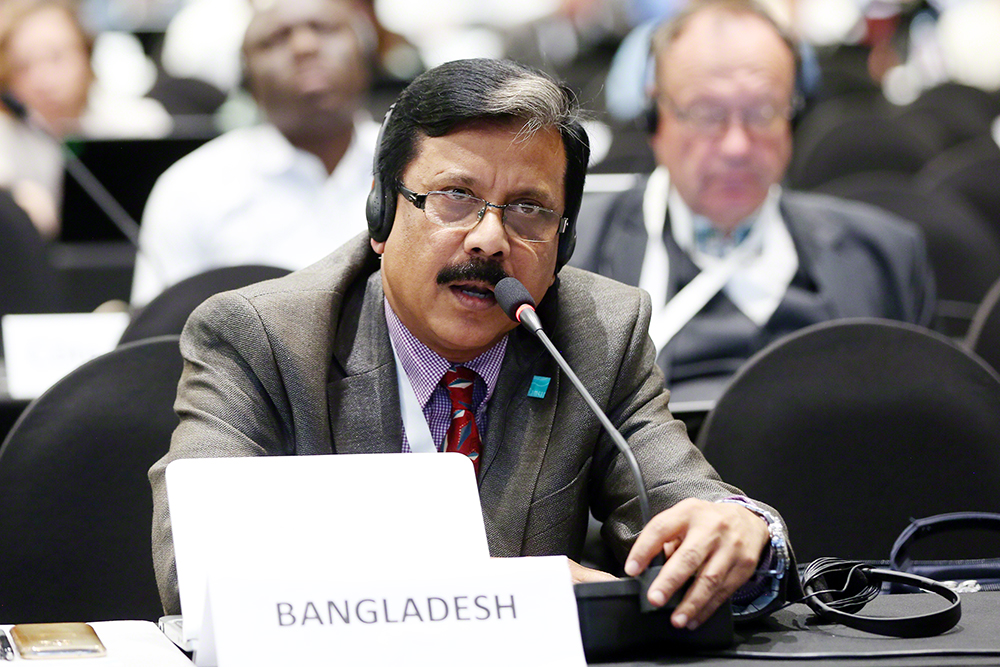

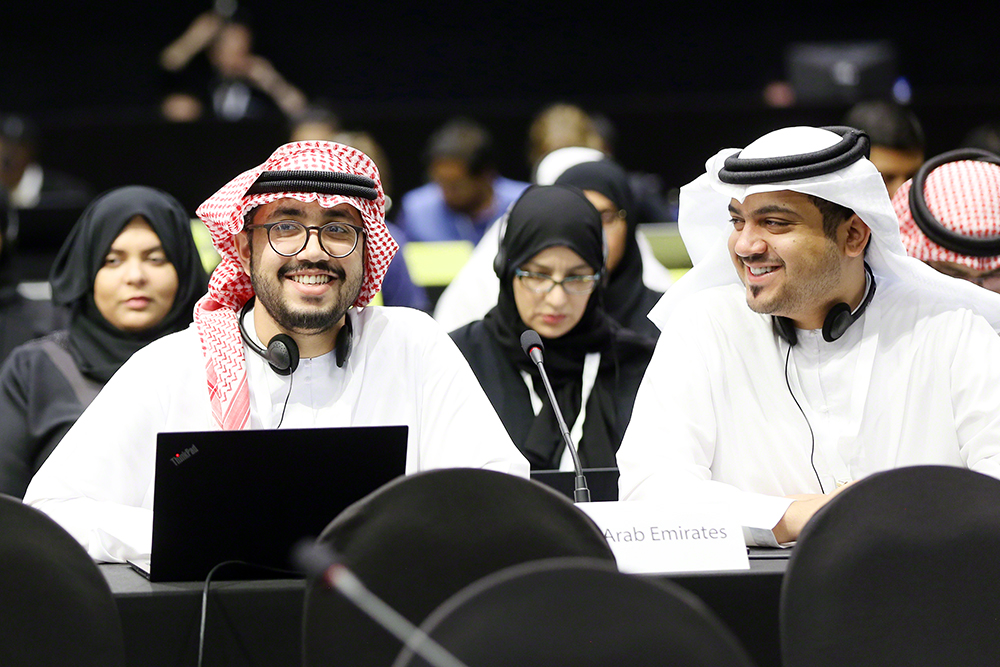
Highlights for Tuesday, 23 October 2018
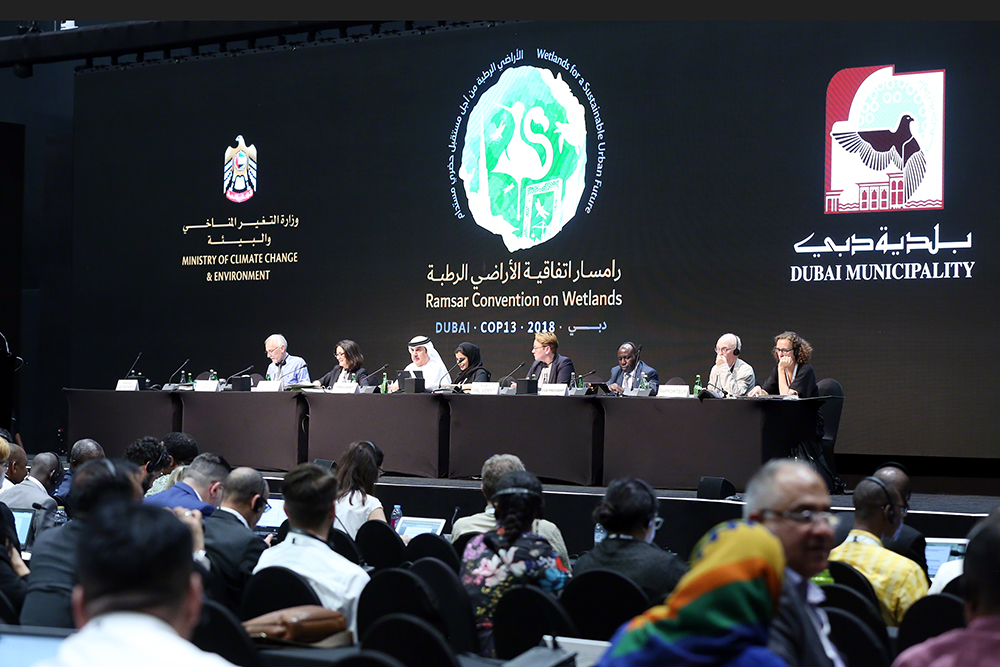
On Tuesday, the COP13 met in plenary throughout the day to address organizational matters and consider reports.
Plenary elected: Thani Bin Ahmed Al Zeyoudi, Minister of Climate Change and Environment, UAE, as COP13 President; Mohamed Saif Al Afkham, Director General, Fujairah Municipality, UAE, as Alternate President; and Kristina Niikkonen, Finland, and Paul Mafabi, Uganda, as Vice Presidents.
Delegates heard reports related to:
- work of the Standing Committee (SC);
- global implementation of the Convention and other work of the Secretariat;
- the List of Wetlands of International Importance;
- implementation of the Communication, Education, Participation and Awareness (CEPA) Programme;
- work of the Scientific and Technical Review Panel (STRP); and
- finance and budgetary matters.
The day concluded with the presentation of the Global Wetland Outlook. Key highlights included:
- the critical role wetlands play in providing valuable ecosystem services;
- increasing accuracy of global wetland area data;
- loss of 35% of wetland sites since 1970;
- decline in populations of wetland-dependent species, including 25% of animal and plant species at risk of extinction;
- negative trends of water quality; and
- insights on the way forward, including enhancing the network of Ramsar sites, integrating wetlands into the post-2015 development agenda, capacity building, and action at national and local levels.
A working group was organized to progress work during COP13 on finance and budget.
Key takeaways included:
- significant efforts by the Secretariat to address identified challenges;
- complementary work of the STRP and CEPA Programme; and the
- sobering, yet compelling messages of the Global Wetland Outlook.
+ Visit the web coverage for Tuesday, 23 October 2018
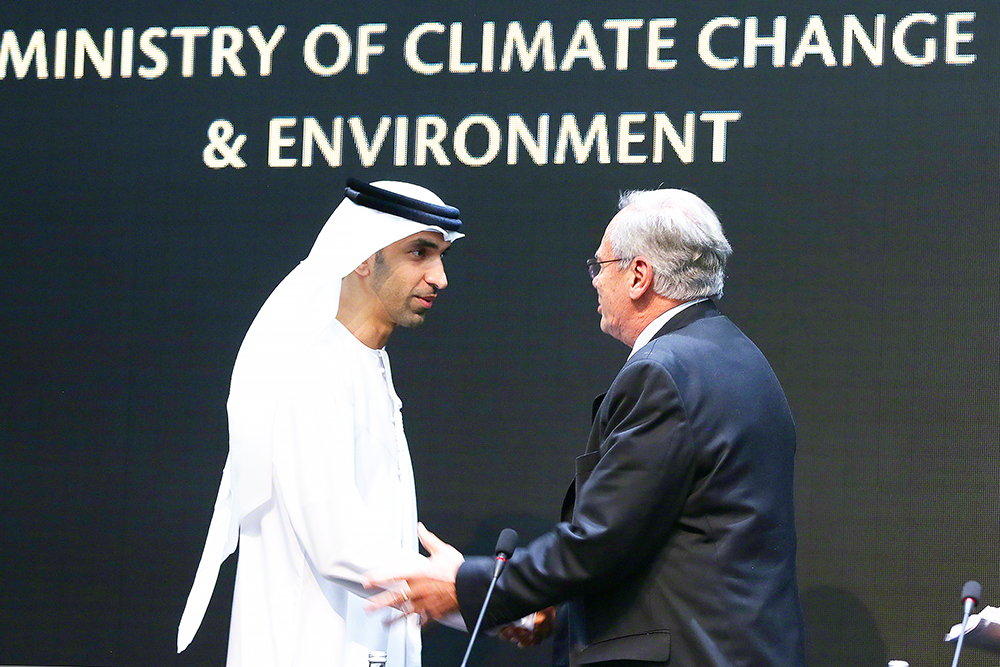
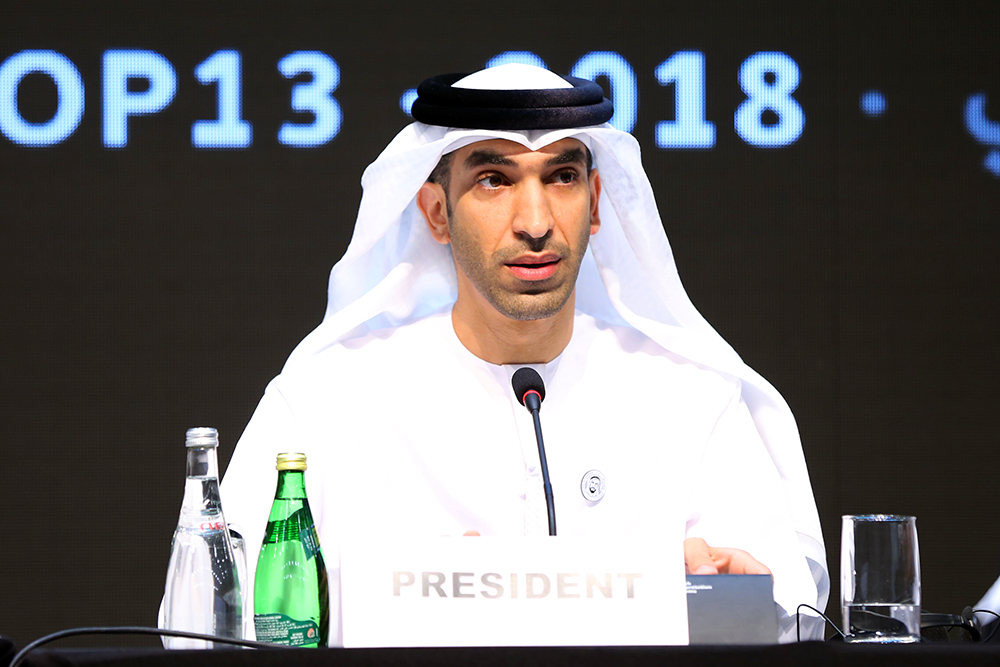
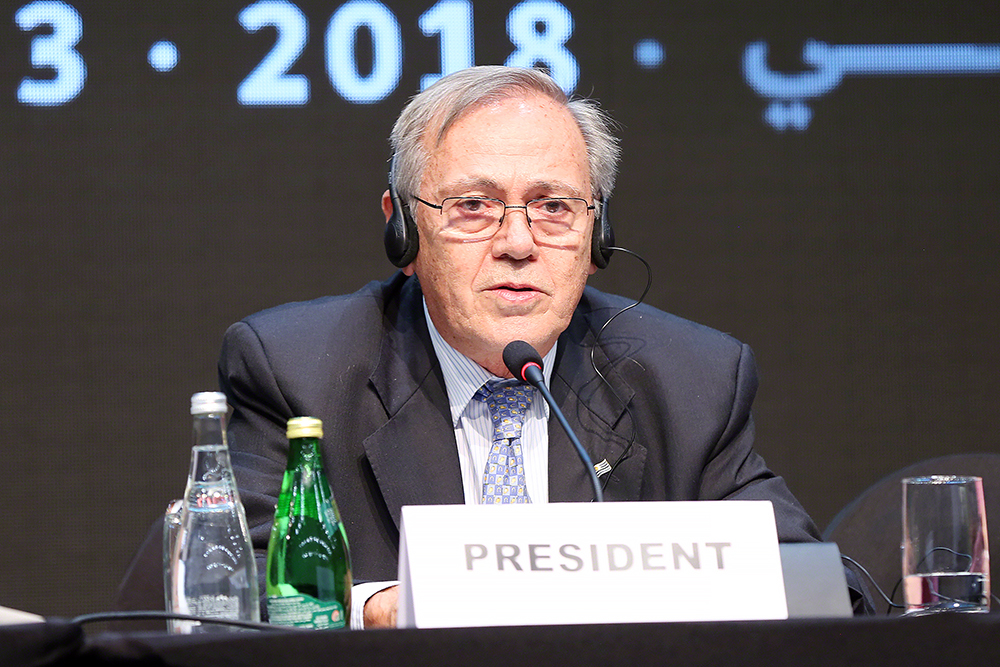

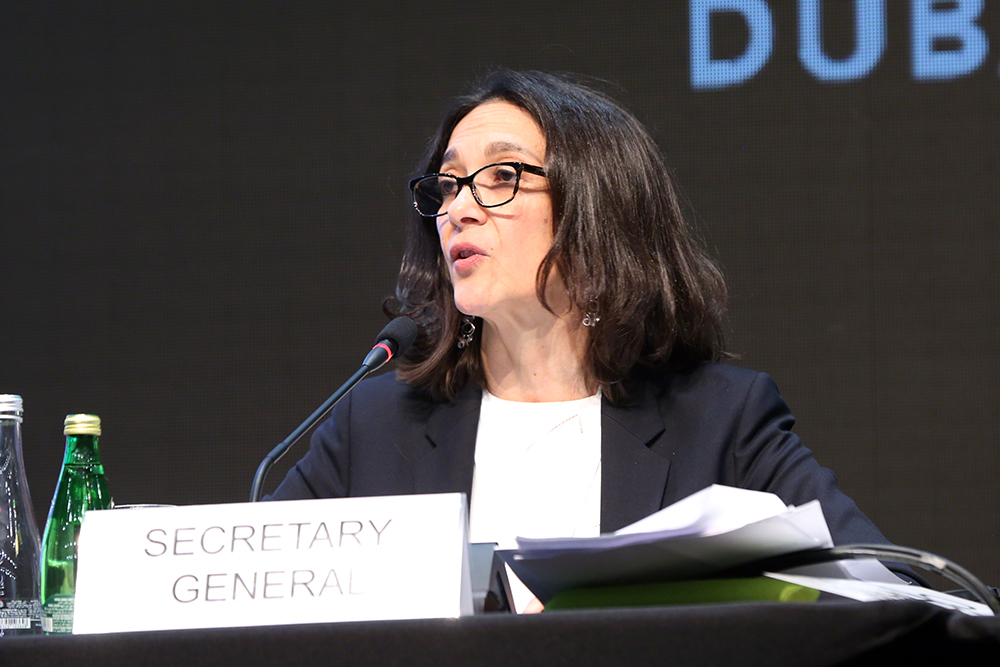
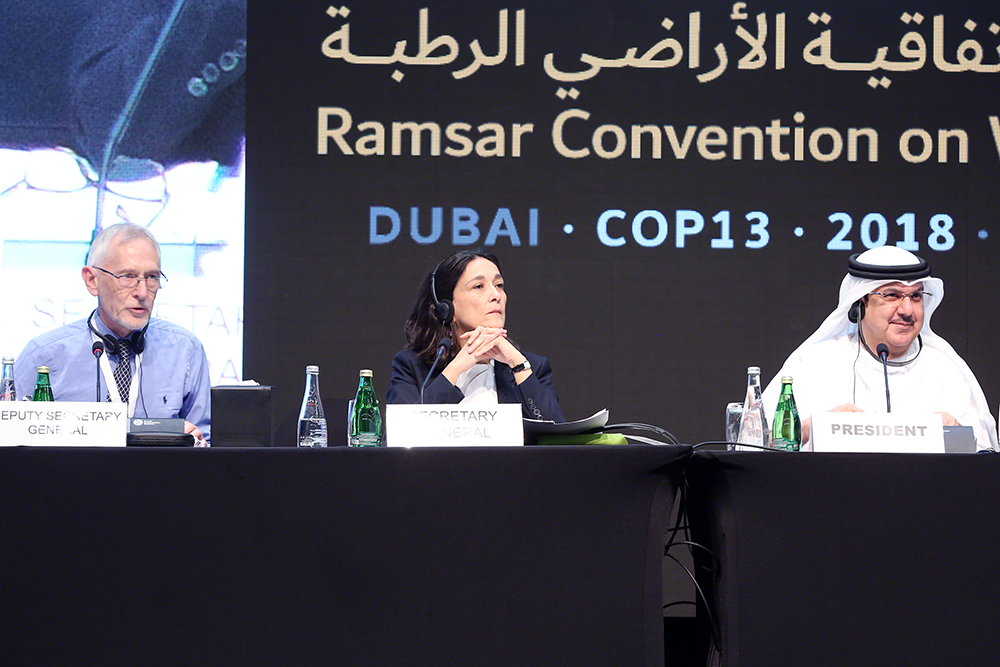
Highlights for Monday, 22 October 2018
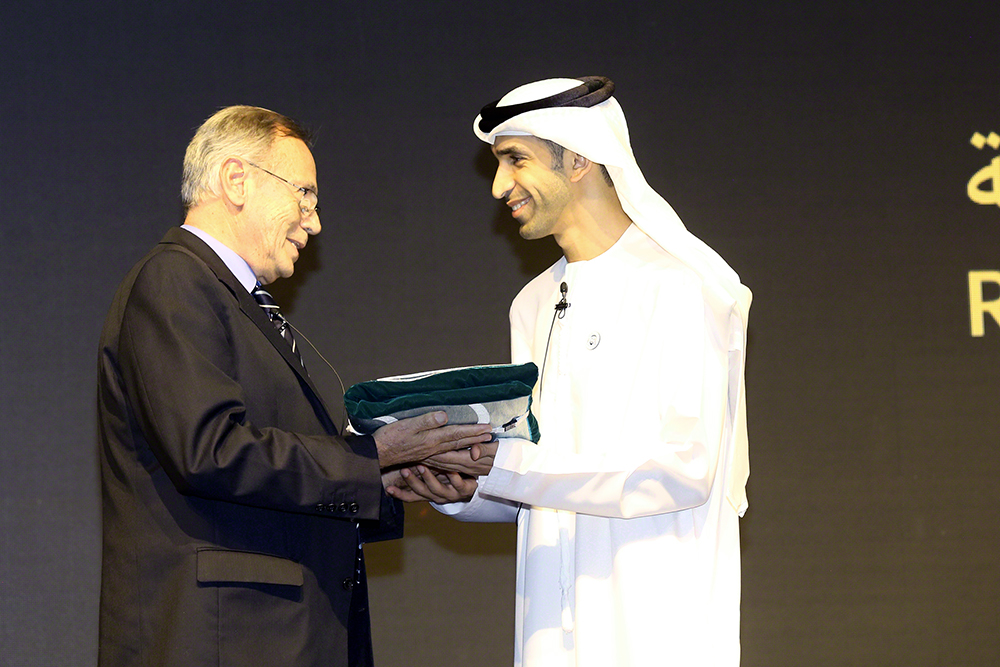
On Monday evening , 22 October, following a welcome reception, COP13 opened under the theme, "Wetlands for a Sustainable Urban Future" in Dubai, United Arab Emirates (UAE).
During opening ceremonies, Uruguay, the COP12 host country, handed over the ceremonial Ramsar flag to UAE, transferring the COP Presidency for the next triennium.
Delegates heard opening remarks from Thani Bin Ahmed Al Zeyoudi, Minister of Climate Change and Environment, UAE, and Jorge Rucks, Chair of the Standing Committee. Additional speakers welcomed delegates, considered the Ramsar Convention in the international context, and highlighted wetlands protection and restoration efforts in the UAE.
A video presentation illustrated the rich diversity of life in protected UAE wetlands.
The evening closed with the Ramsar Awards Ceremony, which recognized: Fundación Global Nature, Spain, for wise use of wetlands; and Youth Climate Action Network of Samoa, for young wetlands champions. Ma Guangren, China, received a Merit award for lifetime achievement in wetlands conservation and restoration projects in China and Asia. Danone was recognized for its 20 years of commitment to conservation and sustainable management of wetlands of international importance.
Regional meetings took place earlier in the day and a midday special event, “UN Ocean Conference Community of Ocean Action on Mangroves: Progress and Opportunities,” highlighted the critical role of mangrove ecosystems for coastal and ocean resilience.
Key takeaways from the first day included:
- a strong emphasis on links between the Ramsar Convention and other international multilateral agreements, especially the Paris Agreement and Sustainable Development Goals;
- a sense that urgent action is needed at all levels; and
- recognition for those individuals and groups making a difference in wetlands protection and restoration.
For a brief history of the Ramsar convention and more details on opening ceremonies, see our curtain raiser.
+ Visit the web coverage for Monday, 22 October 2018
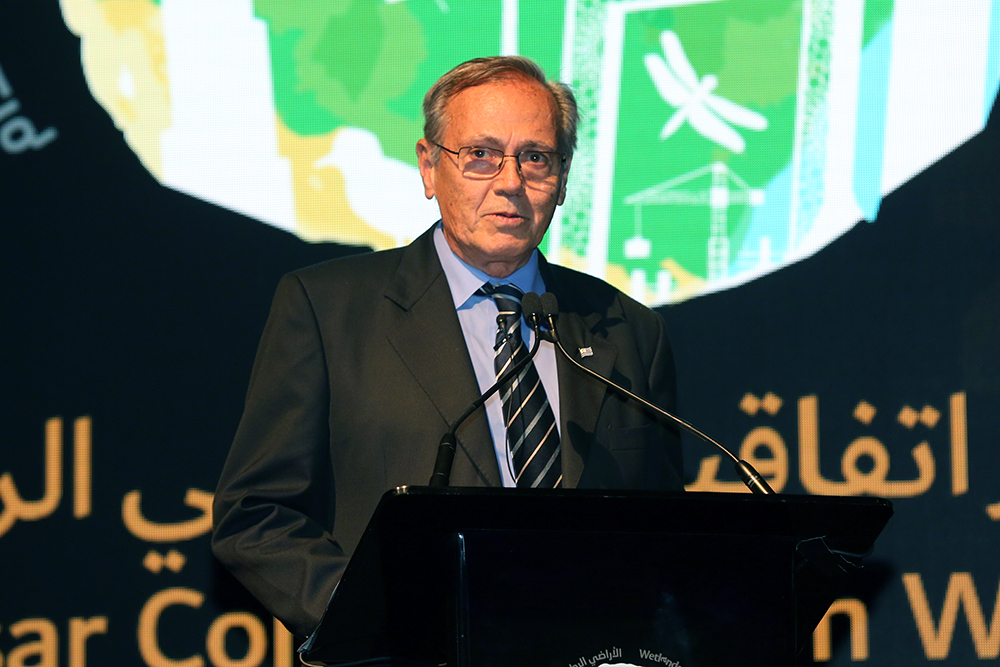
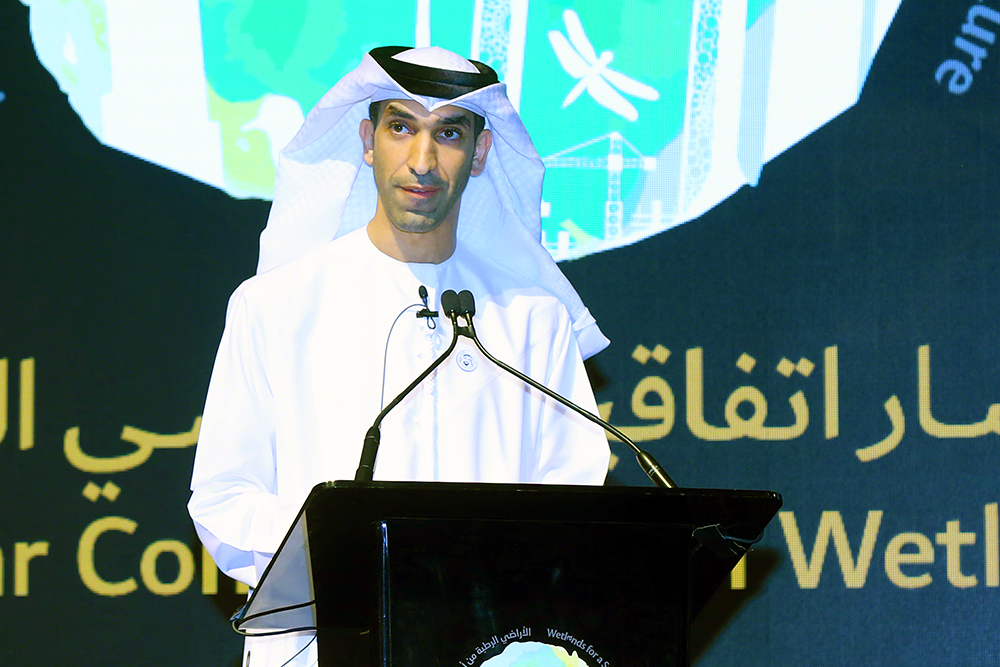
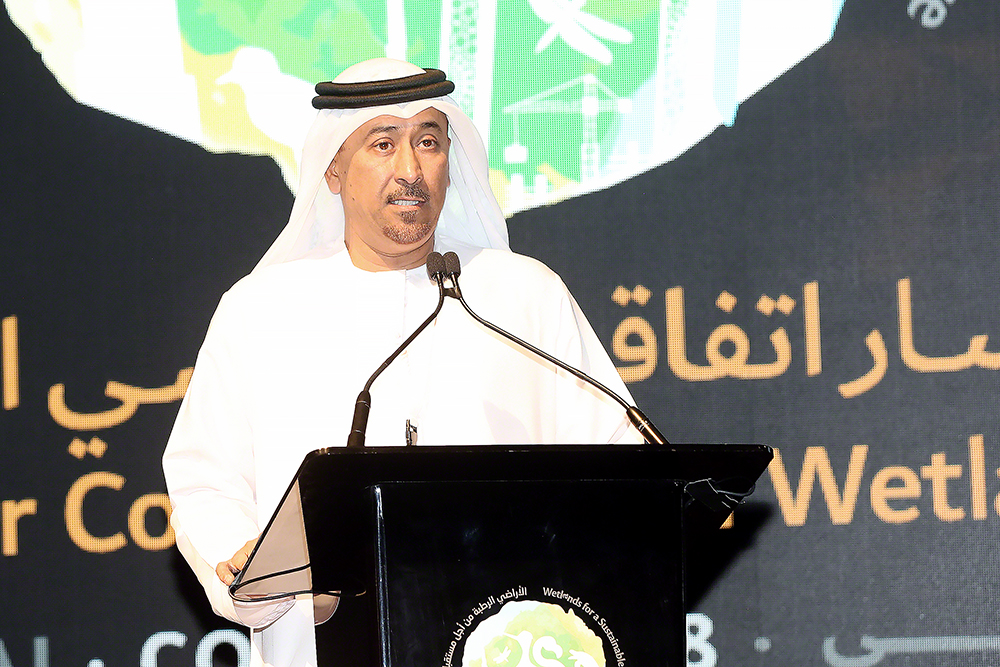
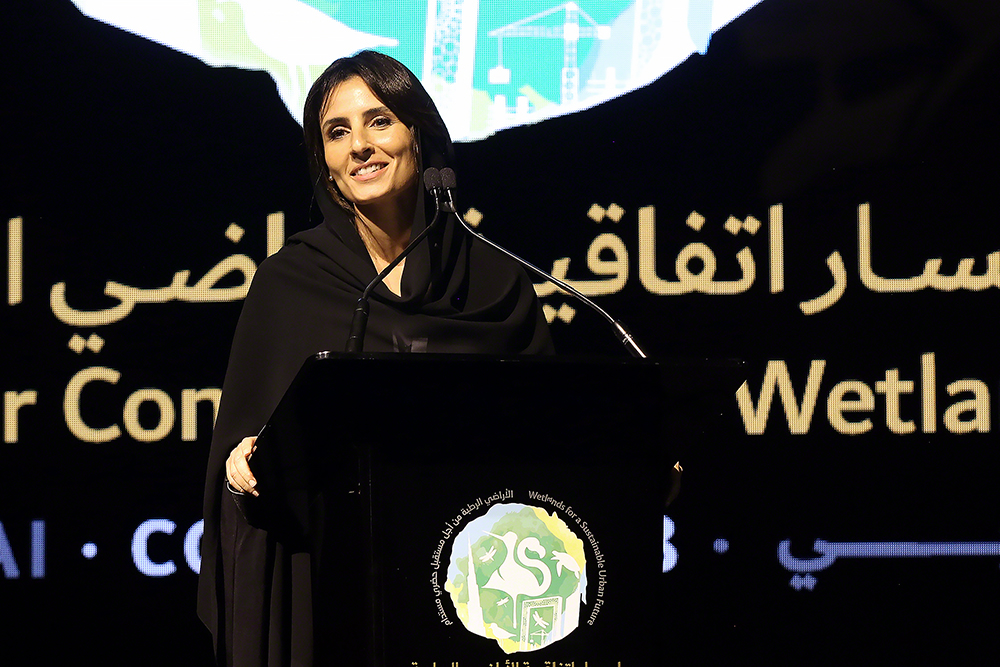
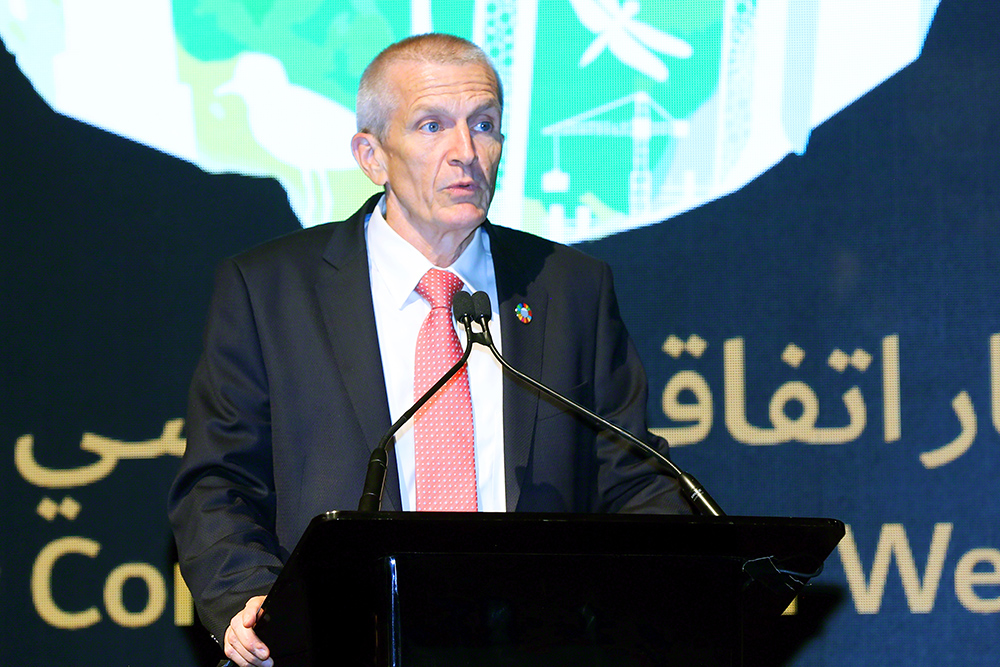

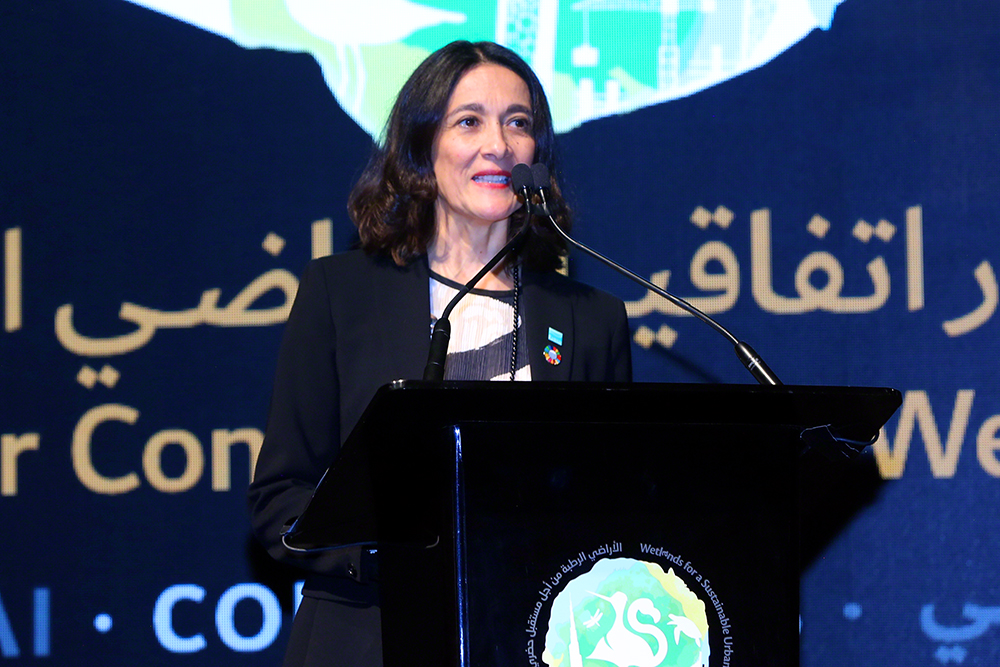
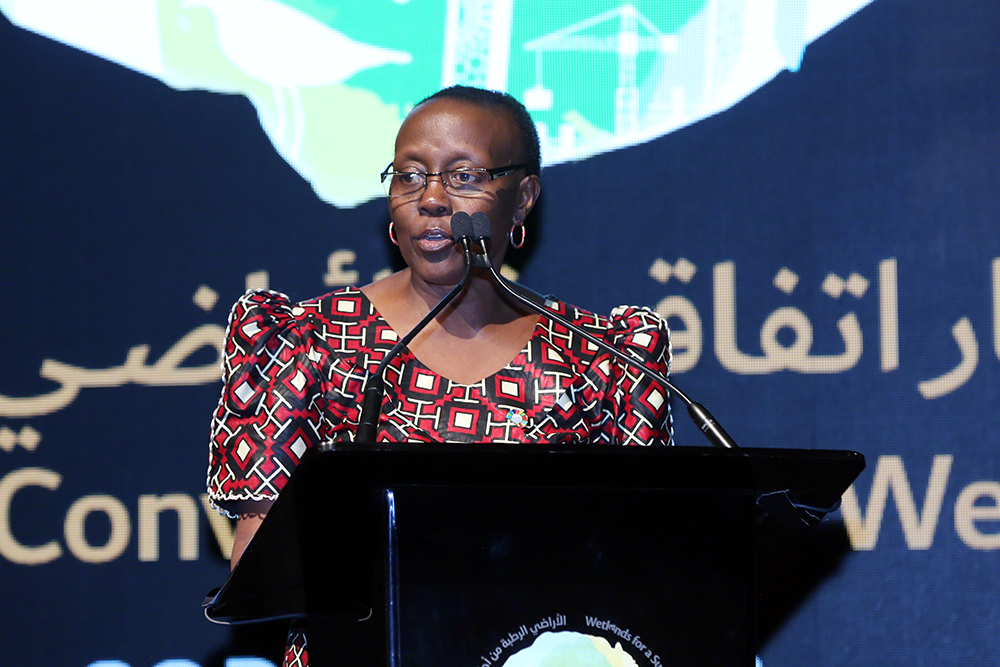

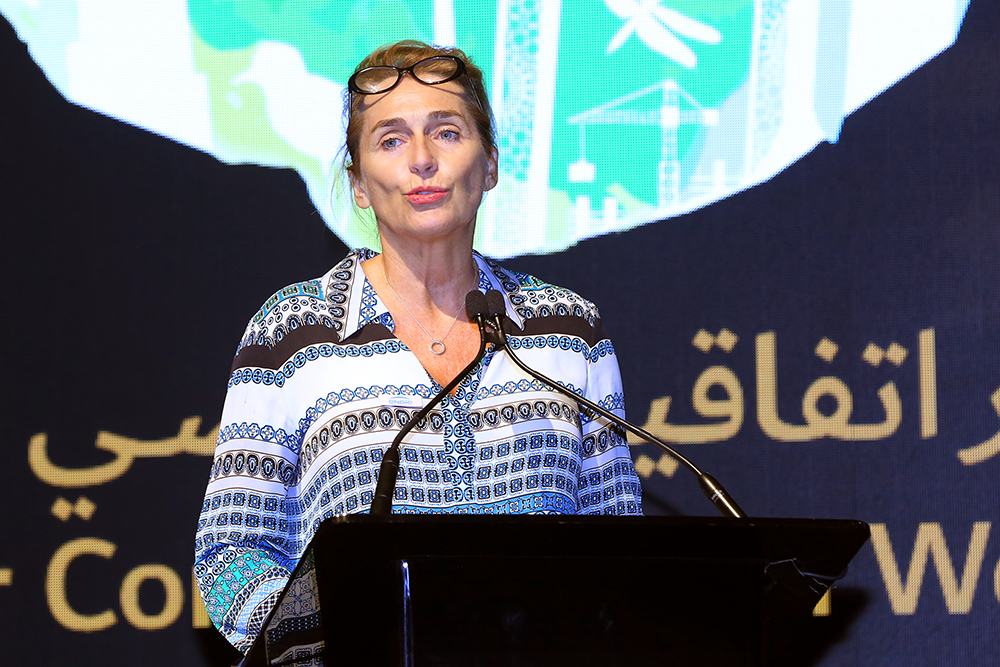

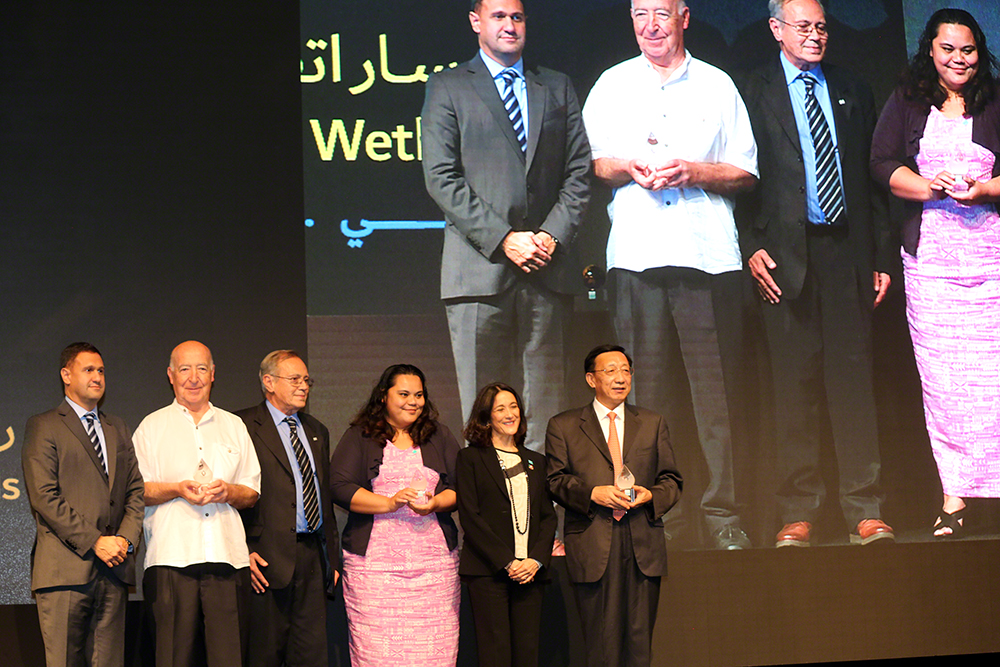
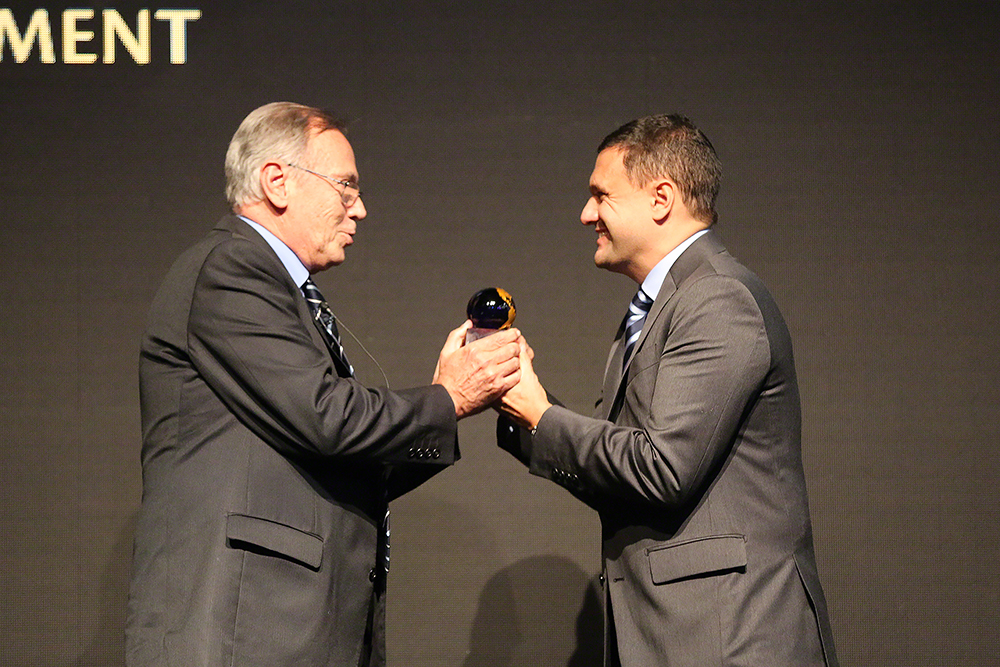
COP13 Resources
- COP13 Website and Documents
- COP13 Provisional Agenda and Working Programme
- Terminology in Daily Use by the Ramsar Convention
- Acronyms in Daily Use by the Ramsar Convention
- History of the Ramsar Convention
- An Introduction to the Ramsar Convention on Wetlands (2016)
- The Fourth Ramsar Strategic Plan 2016-2024
- COP13 Dubai Factsheet
IISD/ENB Meeting Coverage
- COP12, 2-9 June 2015, Punta del Este, Uruguay
- IISD Reporting Services Coverage of Ramsar Convention Meetings, 22-24 and 27-30 October 2014, FAO headquarters, Rome, Italy
IISD Resources
- WATER-L - A News and announcement List on Water Policy Issues
- SDG - A Mailing List for News on Sustainable Development Policy
- SDG Update Newsletter - A compilation of news, commentary and upcoming events published on the SDG Knowledge Hub
- SDG Knowledge Hub - An Online Resource Center for News and Commentary Regarding the Implementation of the United Nations’ 2030 Agenda for Sustainable Development, including all 17 Sustainable Development Goals (SDGs)
- Linkages Update - International Environment and Sustainable Development News